Chinese fusion cuisine is a captivating marriage of traditional Chinese cooking techniques and ingredients with global culinary influences. This innovative culinary style transforms classic Chinese dishes by incorporating elements from various cuisines around the world, resulting in unique and exciting flavor combinations. From chop suey to spicy pastel de nata and Jajangmyeon, Chinese fusion cuisine embraces creativity and experimentation, offering a diverse menu that delights adventurous palates. Whether enjoyed in upscale restaurants or trendy food trucks, each dish reflects the dynamic nature of modern gastronomy while paying homage to the rich culinary traditions of China.
Chop Suey
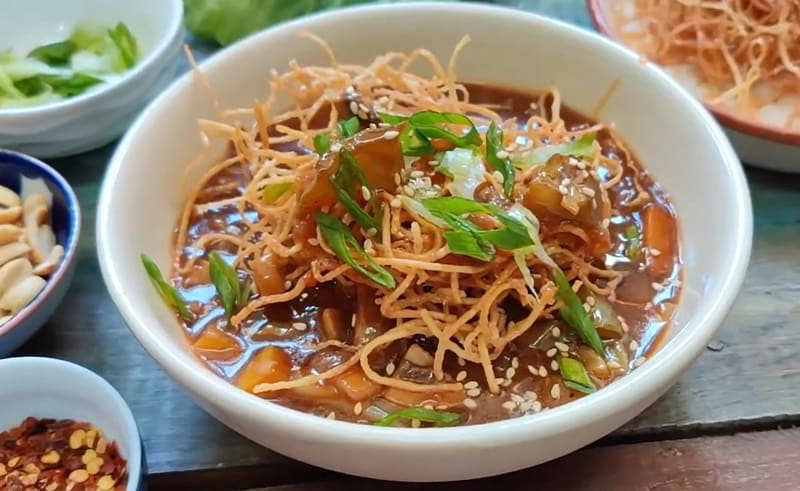
Chop suey is a popular Chinese fusion dish that has gained international recognition for its unique combination of flavors and textures. This dish is believed to have originated in the United States during the late 19th century, where Chinese immigrants adapted their traditional cooking techniques and ingredients to suit the local tastes. Chop suey typically consists of a stir-fried mix of vegetables, such as bean sprouts, cabbage, carrots, and mushrooms, along with meat or tofu. The sauce is often made from a blend of soy sauce, oyster sauce, and other seasonings, which adds a savory and umami-rich taste to the dish. What sets chop suey apart is its versatility and ability to accommodate various ingredients. It can be customized with different proteins like chicken, beef, pork, or shrimp, making it a popular choice for both meat lovers and vegetarians. The dish is typically served over steamed rice or noodles, providing a satisfying and filling meal. Chop suey reflects the essence of Chinese fusion cuisine, where traditional Chinese cooking techniques are combined with local ingredients and flavors. It is a testament to the adaptability and creativity of Chinese cuisine, making it a beloved dish enjoyed by people around the world.
Century Egg
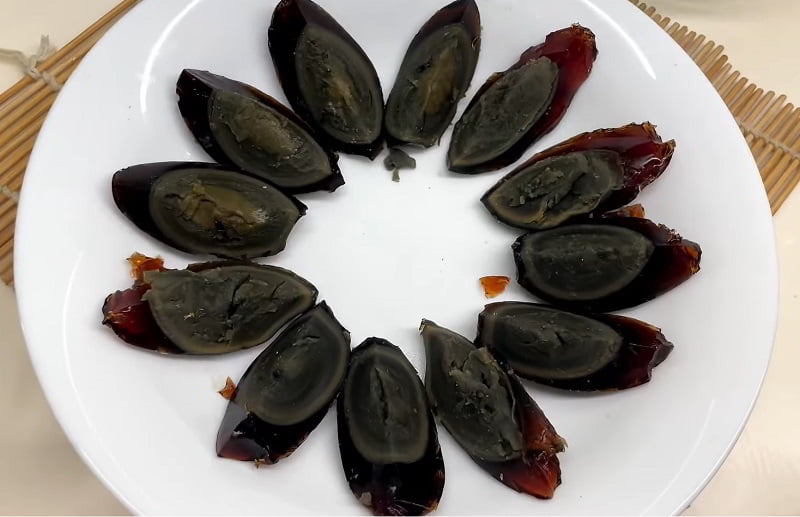
The Century Egg, also known as the Alkalized Egg, is a special Chinese delicacy that is deeply rooted in Tibetan culinary traditions. This unique dish involves the preservation of duck, chicken, or quail eggs in a mixture of clay, salt, ash, rice hulls, and quicklime for varying periods of time. Through this process, the yolk of the egg transforms into a dark green to grey color, boasting a creamy texture and an intense flavor, thanks to the presence of hydrogen sulfide and ammonia. Simultaneously, the egg white undergoes a fascinating change, turning into a dark brown, translucent jelly with a distinctive salty taste. This captivating metamorphosis showcases the meticulous craftsmanship and nuanced flavors that are characteristic of the Century Egg. It is a culinary journey that is celebrated for its unique appearance and bold taste, both in Chinese and Tibetan gastronomy.
Chow Mein
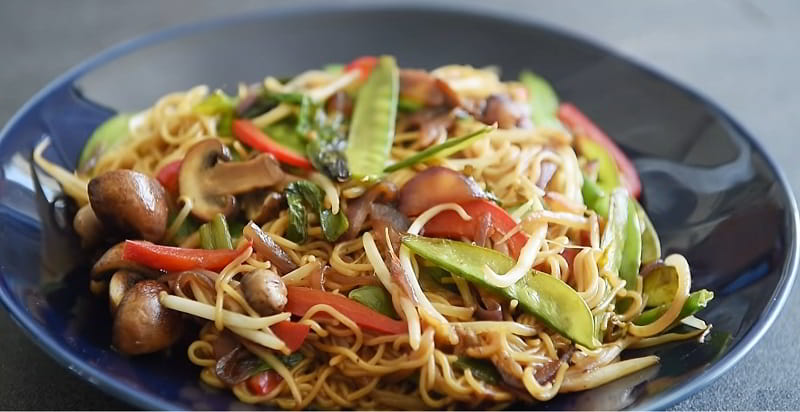
Chow mein is a popular Chinese fusion dish that has gained worldwide recognition for its unique blend of flavors and textures. This delectable dish typically consists of stir-fried noodles, vegetables, and protein, such as chicken, beef, shrimp, or tofu. What sets Chow mein apart is its fusion of Chinese and other culinary influences. The dish often incorporates a variety of ingredients from different cuisines, making it a true fusion delight. It may include elements of Thai, Indian, or even Western cuisine, adding an exciting twist to the traditional Chinese flavors. The dish starts with fresh noodles, which are stir-fried until they become slightly crispy, adding a delightful crunch to the dish. The vegetables, which can include bell peppers, cabbage, carrots, and bean sprouts, are stir-fried quickly to retain their vibrant colors and maintain a pleasant crispness. The protein is then added, cooked to perfection, and mixed with the noodles and vegetables. A flavorful sauce, often a combination of soy sauce, oyster sauce, and various spices, is added to enhance the taste and bring all the ingredients together.
Pastel de Nata

Pastel de nata is a delectable Chinese fusion dish that combines the flavors of traditional Portuguese custard tarts with Chinese culinary techniques. This delightful pastry consists of a flaky and buttery crust filled with a creamy and sweet egg custard. The Chinese fusion twist in this dish is evident in the unique flavors and textures. The custard filling is infused with aromatic Chinese ingredients such as jasmine tea or osmanthus flowers, adding a subtle floral note to the overall taste. The crust, on the other hand, may be made using a combination of traditional Portuguese puff pastry and Chinese lard, resulting in a delicate and crispy texture. The fusion of Chinese and Portuguese flavors creates a harmonious balance between the rich and creamy custard filling and the light and crispy crust. The pastel de nata is often served warm, allowing the custard to melt in your mouth and the flavors to fully develop.
Jajangmyeon
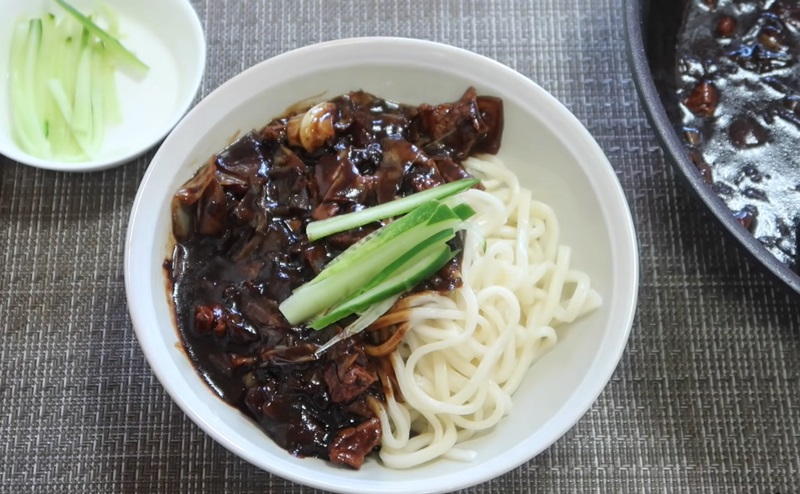
Jajangmyeon, a beloved Chinese-Korean noodle dish, features thick, wheat-based noodles generously topped with a flavorful, dark black bean sauce. This sauce is prepared using fried chunjang (black bean paste), diced pork or beef, and an assortment of vegetables including onions, potatoes, and zucchini. It is this delectable black bean sauce that takes center stage, enveloping the noodles in its rich and savory taste. The combination of the chewy noodles and the sweet yet savory sauce creates a delightful balance of flavors that is truly comforting and satisfying. Many people enjoy Jajangmyeon alongside tangsuyuk (sweet and sour pork) and pickled radish as a delightful accompaniment.
Lumpia
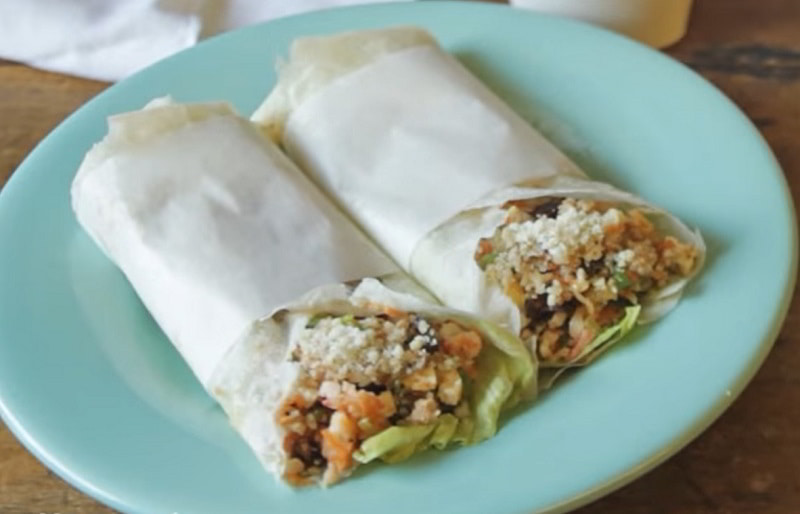
Lumpia is a delectable dish that seamlessly blends the flavors and techniques of Chinese and Filipino cuisines. This mouthwatering appetizer consists of a thin and crispy spring roll wrapper filled with a savory mixture of Chinese-inspired ingredients. The filling typically includes a combination of stir-fried vegetables like cabbage, carrots, and bean sprouts, along with seasoned ground pork or chicken. To enhance the flavors, traditional Chinese spices such as ginger, garlic, and soy sauce are used. The mixture is then wrapped tightly and deep-fried until golden and crispy. What sets this dish apart is the addition of Filipino influences. It is often served with a sweet and tangy dipping sauce made from vinegar, soy sauce, garlic, and sugar. This combination of flavors creates a harmonious balance between the Chinese and Filipino culinary traditions.
Wonton
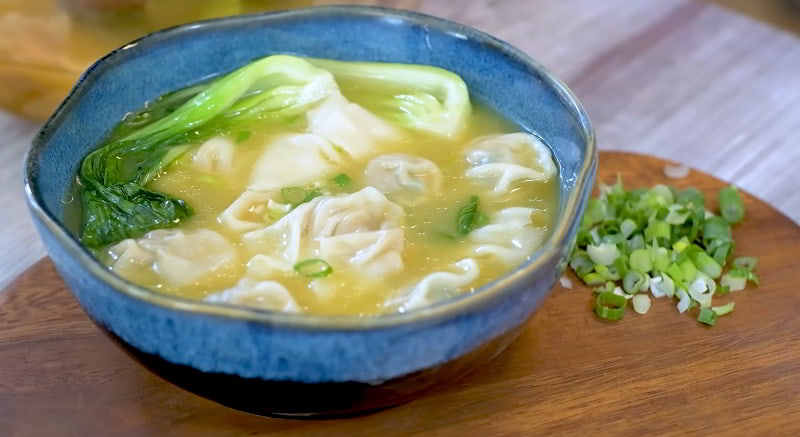
Wonton is a versatile Chinese dumpling, appreciated worldwide for its delicate wrapper filled with various savory fillings. Made from a thin dough of flour, water, and sometimes egg, the wrapper is folded around a mixture of minced meat, typically pork or shrimp, along with seasonings like ginger, garlic, and soy sauce. The dumplings are then boiled, steamed, or fried, resulting in a tender texture and flavorful interior. Wontons are enjoyed in soups, served as appetizers, or as a main course, showcasing their adaptability and rich culinary tradition within Chinese cuisine. Their bite-sized form makes them a favorite for snacking or sharing.
Fortune Cookie

A fortune cookie is a crunchy and sweet biscuit made from flour, sugar, vanilla, and sesame seed oil, typically containing a small paper inside, a "fortune", an aphorism, or vague prediction. The message might also include a Chinese saying with its translation or a set of lucky numbers, sometimes used for lottery picks. While commonly served as a dessert in Chinese restaurants across the United States, Canada, Australia, and beyond, fortune cookies aren't of Chinese origin. Despite this, they've become an iconic part of Westernized Chinese cuisine, adding a touch of whimsy and intrigue to the end of a meal.
General Tso's Chicken
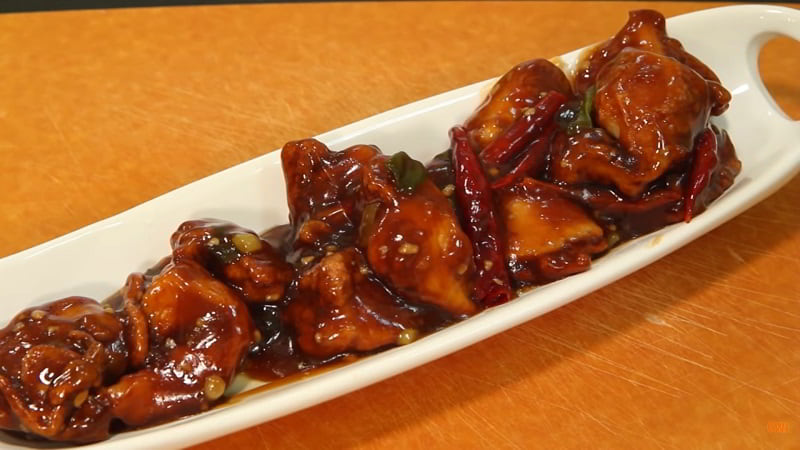
General Tso's chicken is a popular and delicious Chinese fusion dish that has gained popularity in Western countries. This dish combines the flavors of traditional Chinese cuisine with a touch of American influence. The dish consists of crispy chicken chunks that are deep-fried to perfection and then tossed in a rich and tangy sauce. The sauce is a perfect balance of sweet, spicy, and savory flavors, typically made with soy sauce, vinegar, sugar, garlic, ginger, and chili peppers. The chicken is coated in a light batter before frying, giving it a crispy texture that contrasts well with the bold flavors of the sauce. General Tso's chicken is often served with steamed rice or noodles, allowing the diners to enjoy the dish's exquisite flavors.
Fried Rice
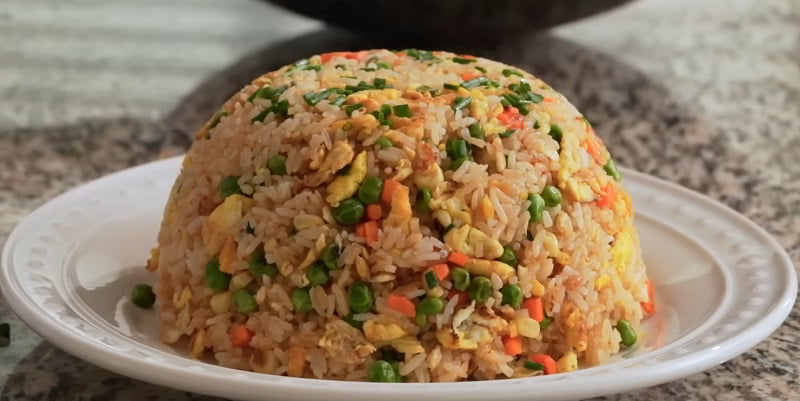
Fried rice is a flavorful and versatile dish that has become a staple in Chinese cuisine worldwide. Cooked rice is stir-fried in a wok or skillet with a variety of ingredients such as scrambled eggs, diced vegetables like carrots, peas, and onions, and protein options like shrimp, chicken, or pork. Seasonings like soy sauce, garlic, ginger, and sesame oil add depth of flavor. The dish is cooked at high heat, allowing the ingredients to blend together while retaining their individual textures. Chinese fried rice is a satisfying and comforting dish enjoyed as a main course or accompaniment to other dishes.
Egg Foo Young
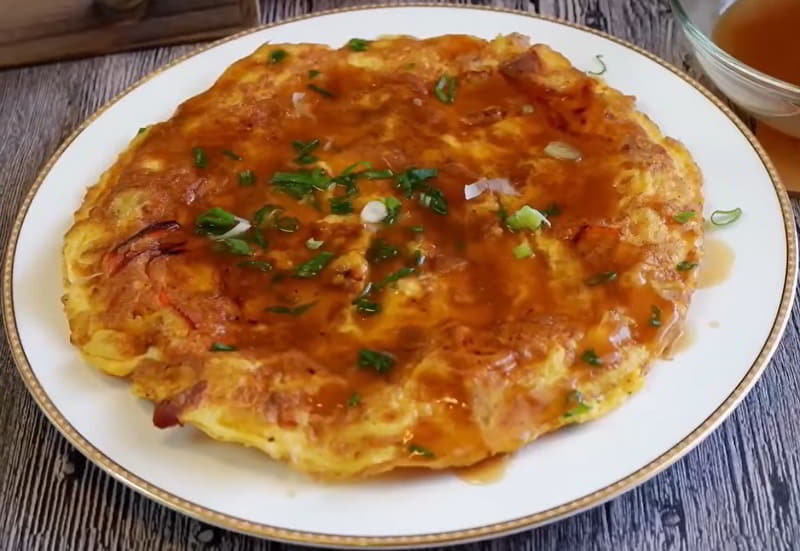
Egg foo young is a popular Chinese fusion dish that combines the flavors of Chinese and Western cuisines. It is a savory omelette-like dish made with beaten eggs, various vegetables, and often includes meat or seafood. To prepare egg foo young, a mixture of eggs is whisked together and then cooked in a hot pan to form a thick omelette. The omelette is then filled with a variety of ingredients such as bean sprouts, mushrooms, onions, and carrots, giving it a crunchy and flavorful texture. Meat or seafood options like chicken, beef, shrimp, or crab can also be added to the mixture to enhance the taste and provide protein. The dish is typically served with a rich brown gravy made from soy sauce, chicken broth, and cornstarch, which adds a savory and tangy element to the dish. Egg foo young is often enjoyed as a main course, accompanied by steamed rice or noodles. Its versatility allows for customization to suit individual preferences, making it a popular choice in Chinese-American cuisine. With its combination of textures and flavors, egg foo young is a delicious and satisfying fusion dish that continues to delight diners around the world.
Crab Rangoon

Crab Rangoon is a popular Chinese fusion dish that combines the flavors of creamy cheese and succulent crab meat. This delectable appetizer is often served in Chinese-American restaurants. The dish consists of a crispy deep-fried dumpling filled with a mixture of cream cheese, crab meat, and various seasonings. The outer layer of the Crab Rangoon is made from a thin wonton wrapper that becomes delightfully crunchy when fried to perfection. Inside, the creamy and savory filling is a delightful contrast to the crispy shell. The cream cheese adds a smooth and rich texture, while the crab meat provides a subtle sweetness and briny flavor. Crab Rangoon is usually served with a sweet and tangy dipping sauce, such as sweet chili sauce or plum sauce, which enhances the overall taste experience. The combination of textures and flavors in this dish creates a harmonious blend that is both comforting and satisfying.
Pancit
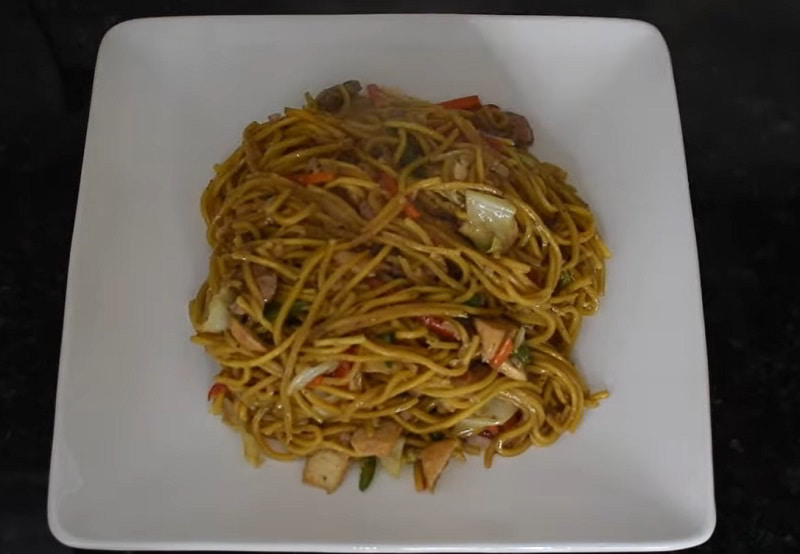
Pancit is a delightful and flavorful dish that seamlessly blends the traditional Chinese flavors with Filipino influences. This noodle-based dish is a staple in Filipino cuisine and has been given a unique twist by incorporating Chinese cooking techniques and ingredients. The dish typically consists of stir-fried noodles, a variety of vegetables, and a protein such as chicken, shrimp, or pork. The noodles used can vary, but it is common to find thick rice noodles or egg noodles as the base. The stir-frying technique adds a smoky and slightly caramelized flavor to the dish. Chinese fusion pancit also incorporates Chinese seasonings like soy sauce, oyster sauce, and sesame oil, giving it a distinct umami taste. The addition of Chinese vegetables such as bok choy and Chinese mushrooms adds a refreshing and crunchy element to the dish. The fusion of Chinese and Filipino flavors creates a harmonious blend of savory, salty, and slightly sweet notes that satisfy the taste buds.
Spring Roll

Spring rolls are a popular dish in Chinese cuisine, known for their crispy exterior and flavorful fillings. These delectable appetizers are made by wrapping a variety of ingredients in a thin, translucent rice paper wrapper and then deep-frying until golden brown. The filling of a Chinese fusion spring roll often includes a combination of fresh vegetables, such as shredded cabbage, carrots, and bean sprouts, along with protein options like diced chicken, shrimp, or tofu. To enhance the flavors, traditional Chinese seasonings like soy sauce, ginger, garlic, and sesame oil are often added. Some variations might also incorporate ingredients from other cuisines, such as Thai basil, cilantro, or even cheese for a unique twist. Spring rolls are typically served with a dipping sauce, such as sweet chili sauce or plum sauce, which adds a tangy and slightly sweet element to complement the savory filling.
Moo Shu Pork
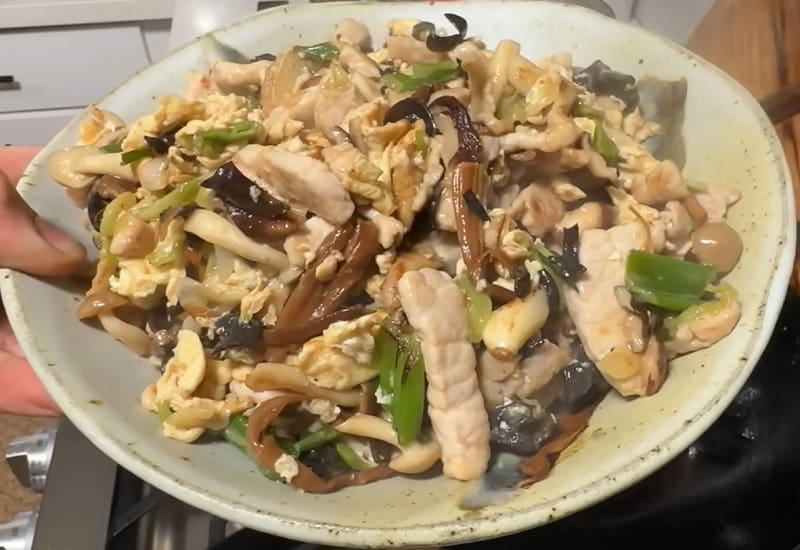
Moo shu pork is a popular Chinese fusion dish that combines the flavors of traditional Chinese ingredients with a unique twist. This dish typically consists of tender slices of pork, stir-fried with an assortment of vegetables such as cabbage, mushrooms, and bamboo shoots. The dish is then seasoned with a flavorful blend of soy sauce, hoisin sauce, and spices. What truly sets moo shu pork apart is the way it is served. The filling is traditionally wrapped in thin, delicate pancakes made from flour and water. These pancakes are then spread with hoisin sauce and topped with the pork and vegetable mixture. The pancakes are then rolled up, creating a delightful and satisfying handheld meal. The combination of tender pork, crunchy vegetables, and savory sauce creates a harmonious blend of flavors and textures.
Mapo Tofu
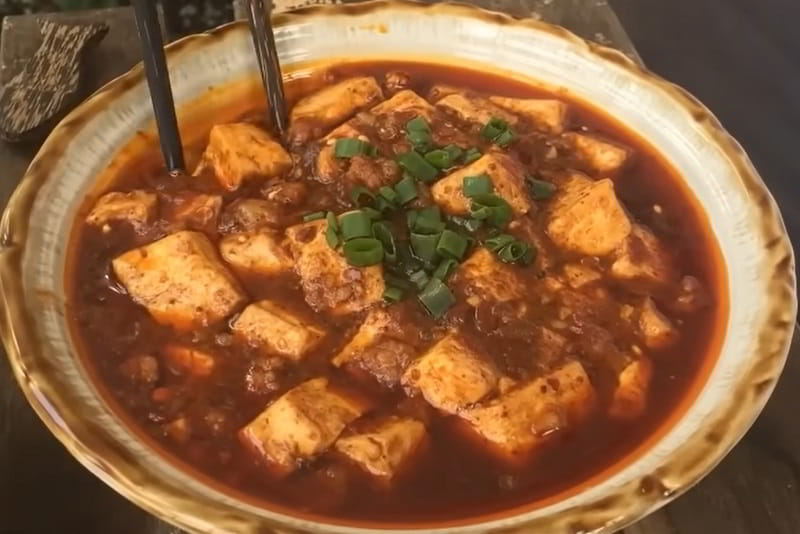
Mapo tofu is a popular dish that originated from the Sichuan province. This flavorful dish combines the traditional Chinese ingredients of tofu and ground pork with a spicy and numbing chili bean paste sauce. The name "Mapo" refers to the pockmarked (ma) elderly lady (po) who was said to have created this dish. The dish starts with soft tofu cubes that are gently simmered in a fragrant and spicy sauce made from Sichuan peppercorns, chili bean paste, fermented black beans, garlic, and ginger. The sauce is the key element that gives Mapo tofu its distinctive flavor. The Sichuan peppercorns provide a unique numbing sensation that balances the heat from the chili peppers. To add another layer of texture and flavor, ground pork is often added to the dish. The combination of the tender tofu and the savory pork creates a satisfying and hearty meal. Mapo tofu is typically served with steamed rice, allowing the flavors to meld together.
Char Siu
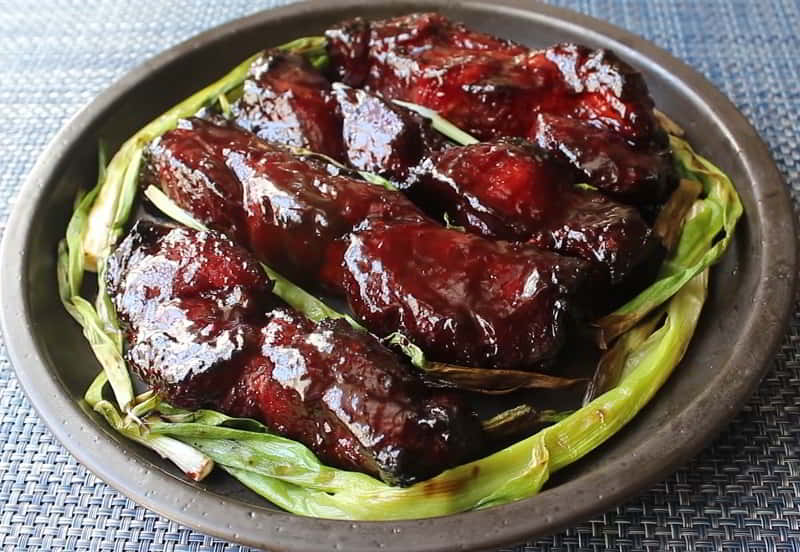
Char Siu, also known as Chinese barbecued pork, is a beloved and delicious dish in Chinese cuisine. To create this flavorful dish, pork is marinated in a delectable blend of sweet and savory sauces, then roasted to perfection. The marinade usually includes soy sauce, hoisin sauce, honey, Chinese five-spice powder, and sometimes garlic or ginger for added depth of flavor. Throughout the cooking process, the meat is basted with the marinade, resulting in a sticky glaze that enhances the taste. The end result is tender, juicy pork with a slightly sweet and smoky flavor. Enjoy Char Siu as a standalone main dish or use it to elevate other dishes like fried rice or noodle stir-fries.
Moo Goo Gai Pan
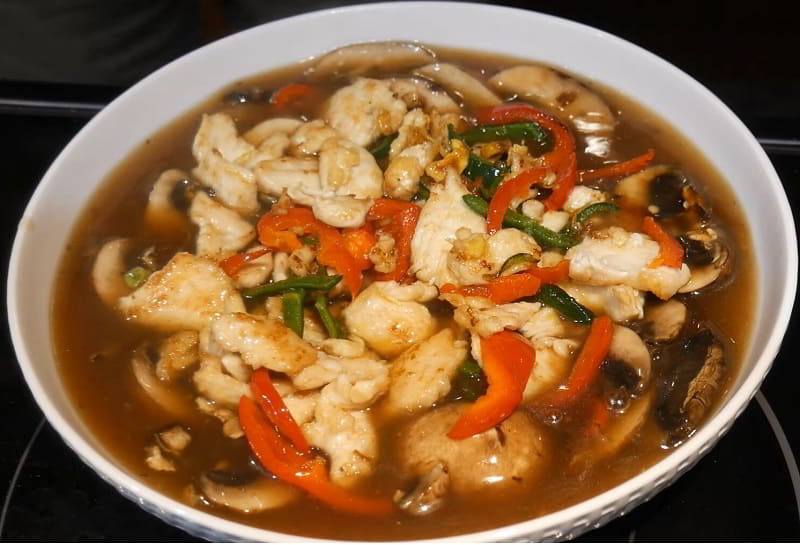
Moo goo gai pan is a Cantonese-inspired dish that has been adapted for American tastes. It features tender slices of chicken and mushrooms cooked in a savory oyster sauce. This dish can be prepared as a quick stir-fry or simmered in a claypot for added depth of flavor. In its Americanized form, it typically consists of thinly sliced chicken, white button mushrooms, and assorted vegetables like bok choy, snow peas, bamboo shoots, and carrots. The term "pan" refers to the thin slices of chicken used in the dish. It's a simple yet flavorful dish popular in Chinese-American cuisine, offering a balance of textures and flavors.
Stinky Tofu
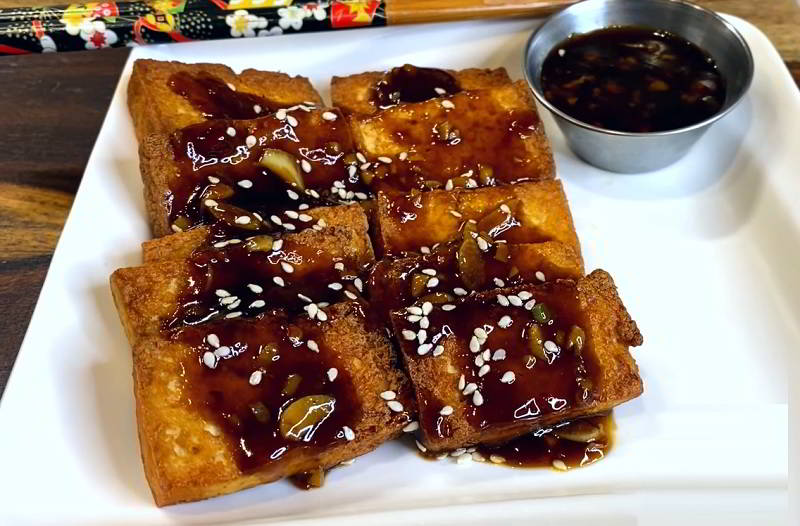
Stinky tofu, a Chinese culinary adventure, is a form of fermented tofu celebrated for its bold and distinctive aroma. Typically found in bustling night markets and roadside stands, this unique snack or side dish has a stronger presence outside traditional restaurant settings. Traditionally, stinky tofu undergoes a prolonged fermentation process in a brine enriched with vegetables and meat, sometimes lasting for months. However, modern factory production opts for a shorter marination period of one or two days to achieve the desired pungency.
Prepared in various ways, stinky tofu can be relished cold, steamed, stewed, or, most commonly, deep-fried, offering a range of textures and flavors. Accompanied by chili sauce or soy sauce, this culinary marvel showcases a spectrum of colors, from the golden, fried Zhejiang-style to the black hue characteristic of Hunan-style stinky tofu.
While the initial whiff may evoke comparisons to rotten garbage or smelly feet, the diverse palate of stinky tofu enthusiasts draws likenesses to blue cheese or even the complexity of aged meats. It is widely believed that the more pungent the aroma, the richer and more nuanced the flavor experience.
Yangzhou Fried Rice
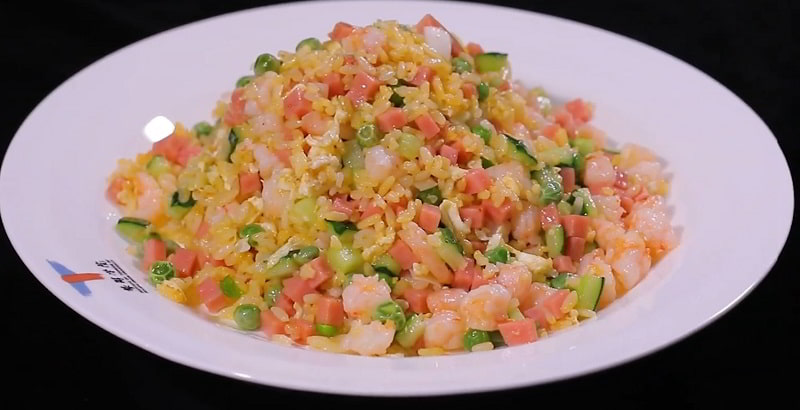
Yangzhou fried rice is a beloved Chinese rice dish that originated in the city of Yangzhou, located in Jiangsu province. This flavorful and aromatic dish has gained popularity worldwide. To make it, cooked rice is stir-fried with a delightful mix of ingredients, such as diced vegetables (carrots, peas, and corn) and diced meat (shrimp, chicken, or ham). The rice is cooked in a wok with soy sauce, oyster sauce, and other seasonings, resulting in a savory and rich taste. Yangzhou fried rice is renowned for its vibrant colors and well-balanced flavors. The combination of tender meat, crunchy vegetables, and fluffy rice results in a satisfying and comforting texture. It is often garnished with thinly sliced green onions and scrambled eggs, which not only adds freshness but also enhances its visual appeal.
Lo Mein
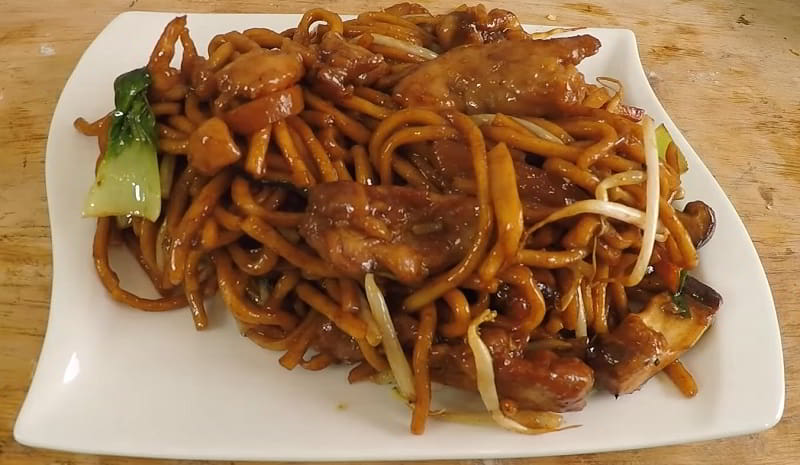
Lo Mein is a beloved Chinese noodle dish that is enjoyed worldwide. It is a flexible and delicious meal that can be tailored to individual preferences by using different ingredients. Traditionally, the dish consists of stir-fried wheat flour noodles, combined with a medley of vegetables, protein options like chicken, beef, or shrimp, and a delectable sauce. The noodles used in Lo Mein are delightfully soft and chewy, offering a satisfying texture. While the vegetables in the dish can vary, popular choices include carrots, broccoli, bell peppers, and mushrooms. The protein is thinly sliced and cooked alongside the noodles, delivering both flavor and substance. The sauce plays a significant role in bringing all the flavors together, featuring a delightful combination of soy sauce, oyster sauce, sesame oil, and a blend of seasonings that contribute to the dish's richness and savory taste.
Hot and Sour Soup
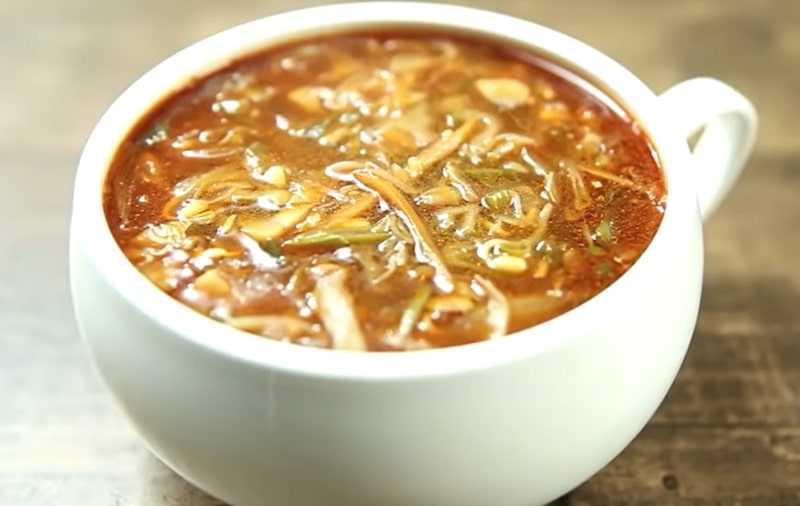
Hot and sour soup is a widely enjoyed Chinese dish with numerous variations. The American-Chinese rendition typically differs by being thicker due to the addition of corn starch. It can be made with chicken or pork broth, or with a meat-free alternative. Key components often found in this version include bamboo shoots, toasted sesame oil, wood ear fungus, day lily buds, vinegar, egg, corn starch, and white pepper. Additional ingredients might encompass button mushrooms, shiitake mushrooms, or straw mushrooms, along with small slices of tofu skin. This flavorful soup boasts a harmonious blend of spicy and tangy flavors, making it a favorite in Chinese-American cuisine.
Mie Goreng
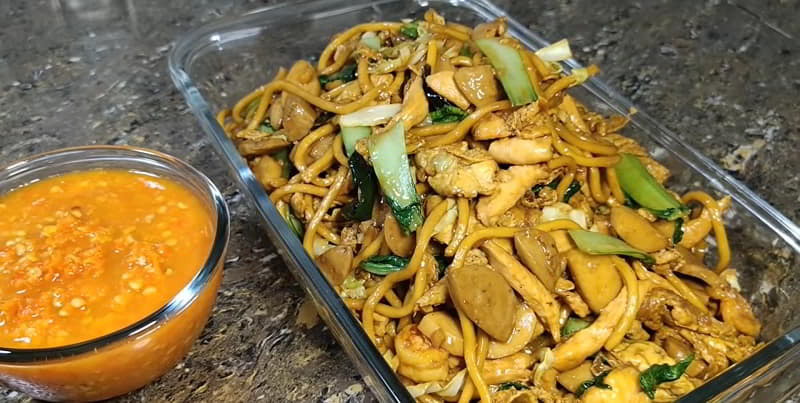
Mie goreng, a delightful dish in Chinese fusion cuisine, is a delicious and popular stir-fried noodle dish that originates from Indonesia. The name "mie goreng" translates to "fried noodles" in English, and it perfectly captures the essence of this flavorful creation. This dish combines Chinese cooking techniques with Indonesian spices and ingredients, resulting in a unique and tantalizing flavor profile. The base of mie goreng is typically made with egg noodles, which are stir-fried in a wok with a medley of vegetables like carrots, cabbage, and bean sprouts. The noodles are then infused with a rich blend of seasonings, such as soy sauce, kecap manis (a sweet soy sauce), garlic, and chili paste. To enhance the dish's taste and texture, it is common to add proteins like chicken, shrimp, or tofu. The combination of savory, sweet, and spicy flavors in mie goreng creates a harmonious balance that is both comforting and satisfying.
Dalgona Coffee

Dalgona Coffee, originating from Macau, is a trendy whipped coffee drink. It's made by vigorously whipping equal parts of instant coffee, sugar, and hot water until it forms a thick, creamy foam. This frothy mixture is then spooned over a glass of cold or hot milk, creating a striking layered effect. After the drink spread to South Korea, it was renamed "dalgona coffee as the name "Dalgona" refers to a type of Korean honeycomb toffee, resembling the drink's frothy texture.
Egg Roll
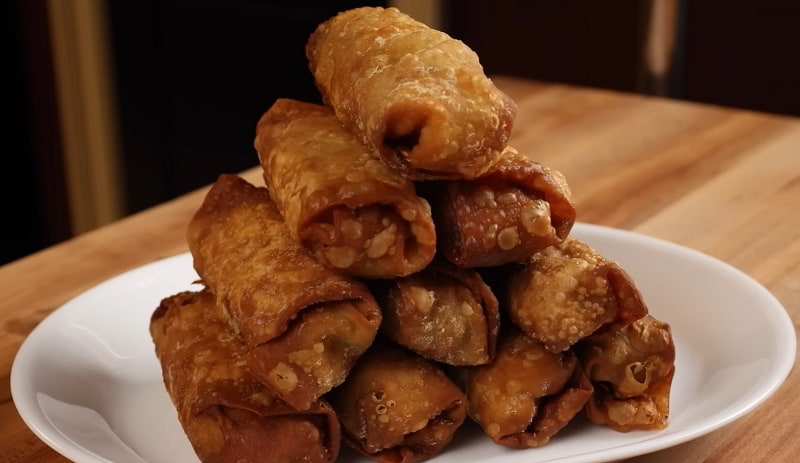
The egg roll, a staple of American Chinese cuisine, is a deep-fried appetizer commonly found in Chinese restaurants across the United States. This savory delight consists of a cylindrical roll filled with shredded cabbage, chopped meat, or various other fillings encased in a thick wheat flour wrapper. Once assembled, it's fried until golden in hot oil. Served warm, egg rolls are typically enjoyed by hand, dipped in sauces like duck sauce, soy sauce, plum sauce, or hot mustard, often provided in convenient cellophane packets. With its crunchy exterior and flavorful fillings, the egg roll has become an iconic dish in American Chinese culinary offerings.
Manchurian
-1708947262.jpg)
Manchurian is a popular category of Indian Chinese cuisine featuring ingredients like chicken, cauliflower (gobi), prawns, fish, mutton, or paneer. These ingredients are roughly chopped, deep-fried, and then sautéed in a flavorful sauce infused with soy sauce. This dish reflects the fusion of Chinese cooking methods and flavors adjusted to suit Indian palates. It has evolved into a beloved staple of Indian Chinese culinary tradition, offering a delightful blend of textures and tastes that satisfy cravings for both Chinese and Indian flavors.
Egg Tart

Chinese fusion cuisine is a delightful blend of traditional Chinese flavors with Western culinary techniques, resulting in unique and delectable dishes. One such dish is the egg tart, a pastry that showcases the perfect fusion of Chinese and Portuguese influences. The egg tart is a small, delicate pastry with a flaky crust and a creamy, custard-like filling. While it may resemble a Western-style custard tart, the Chinese fusion twist lies in the flavors and ingredients used. The filling is made from a smooth mixture of eggs, milk, and sugar, infused with a hint of Chinese flavors like jasmine tea, osmanthus flowers, or even pandan leaves. This creates a delightful balance between the rich creaminess of the custard and the subtle, fragrant notes of the Chinese ingredients. The crust of the egg tart is typically made from a combination of butter and flour, resulting in a light and crisp texture that perfectly complements the creamy filling. The tarts are usually baked until the custard is just set and the crust is golden brown.
Mongolian Beef
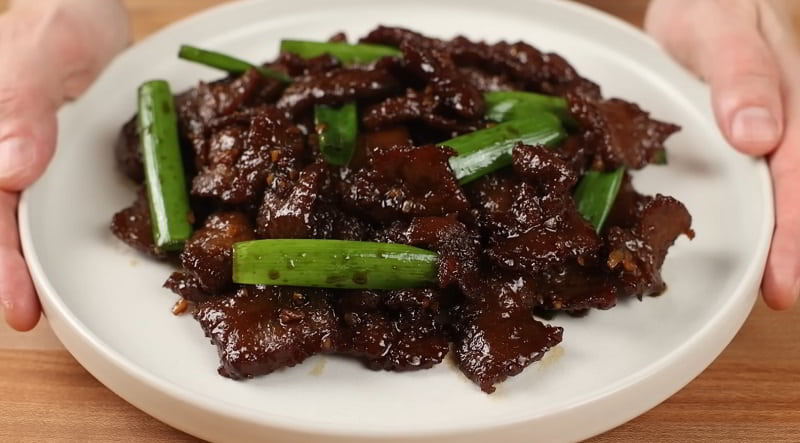
Mongolian beef is a Taiwanese dish featuring thinly sliced beef, often flank steak, cooked with onions. It's frequently accompanied by scallions or assorted vegetables and tends to be mild in spiciness. Traditionally served atop steamed rice, in the United States, it's commonly presented over crispy fried cellophane noodles. This dish has become a fundamental offering in American Chinese eateries. Despite its name, Mongolian beef doesn't originate from Mongolian cuisine
Orange Chicken

Orange chicken is a popular Chinese fusion dish that combines the bold flavors of Chinese cuisine with a tangy twist. This delicious dish typically features crispy battered chicken pieces that are stir-fried and coated in a sticky, flavorful orange sauce. The chicken is first marinated in a blend of soy sauce, ginger, and garlic, which infuses it with savory goodness. It is then coated in a light batter and deep-fried until golden and crispy. The sauce is the star of the dish, made from fresh orange juice, orange zest, soy sauce, honey, and a hint of spice. It has a perfect balance of sweet and tangy flavors. The dish is garnished with sesame seeds and green onions, adding a touch of freshness and crunch. The combination of crispy chicken, zesty orange sauce, and aromatic garnishes creates a harmony of flavors and textures that is simply irresistible.
Taho
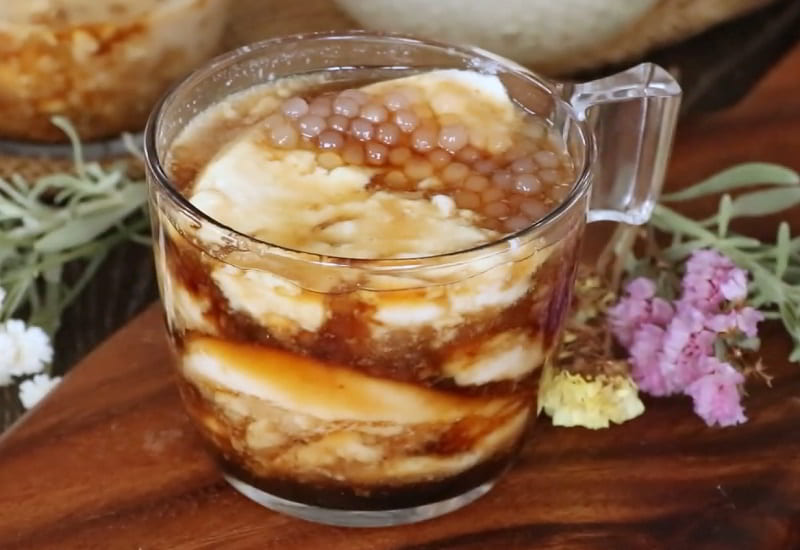
Taho is a fusion of Filipino and Chinese cuisines. This iconic dish consists of warm silken tofu topped with translucent tapioca pearls and sweet arnibal syrup made from caramelized brown sugar and vanilla. Taho is cherished for its comforting warmth, creamy texture, and delightful sweetness. It's often enjoyed as a quick, nutritious breakfast or snack, providing a satisfying combination of protein-rich tofu and energizing carbohydrates from the tapioca pearls.
Jalfrezi
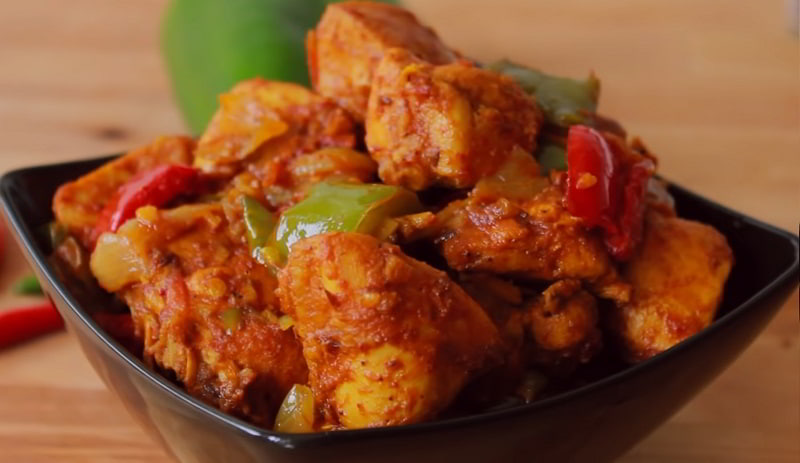
Jalfrezi is a popular Chinese fusion dish that combines the bold flavors of Chinese cuisine with the spicy kick of Indian cuisine. This mouthwatering dish typically consists of stir-fried vegetables and your choice of protein, such as chicken, beef, or prawns, in a rich and tangy sauce. The key to a delicious Jalfrezi dish lies in the balance of flavors. The vegetables are stir-fried to perfection, maintaining their crispiness while absorbing the aromatic spices. The protein is marinated in a blend of Chinese and Indian spices, ensuring that each bite is packed with flavor. The sauce is the star of the Jalfrezi. It is a harmonious blend of Chinese soy sauce, Indian spices like cumin, coriander, and turmeric, and a touch of chili for that spicy kick. The sauce coats the stir-fried ingredients, creating a luscious and savory dish that will leave your taste buds tingling.
Siopao
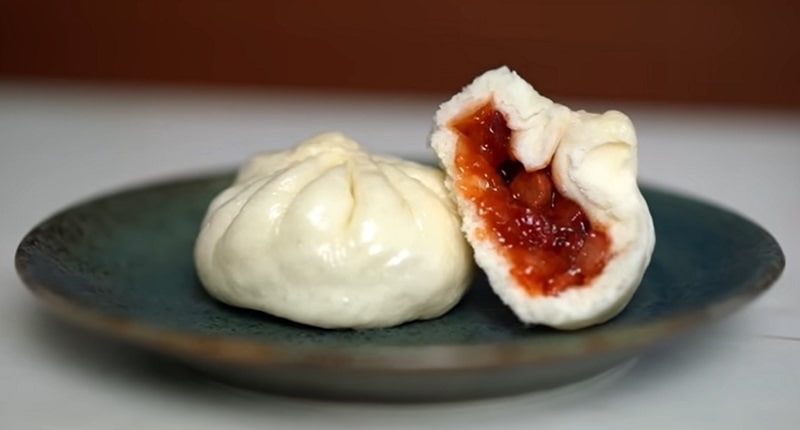
Siopao, also known as "baozi" in Mandarin, is a popular and delicious Chinese fusion dish that has gained popularity worldwide. This delectable dish is a steamed bun filled with a combination of Chinese and Filipino flavors, making it a truly unique and flavorful experience. The siopao bun is made from a soft and fluffy dough, which is then filled with a variety of savory fillings. Traditional fillings include pork asado, a sweet and savory braised pork, or bola-bola, a mixture of ground pork and vegetables. However, modern variations have emerged, incorporating fusion ingredients like teriyaki chicken, barbecue beef, or even seafood. The siopao is then steamed until the bun becomes soft and fluffy, and the filling becomes juicy and flavorful.
Hotteok

Hotteok, a delectable dish, is a delightful combination of Chinese and Korean flavors. The dish starts with a dough made from a mixture of wheat flour, water, and yeast, which is then filled with a variety of ingredients. The filling often includes traditional Chinese ingredients such as minced pork, cabbage, and scallions, combined with Korean flavors like gochujang (spicy chili paste) and soy sauce. This blend of ingredients creates a harmonious balance of sweet, spicy, and savory flavors. After the filling is added, the dough is shaped into a small round pancake and pan-fried until golden brown. The end result is a crispy, yet soft and chewy pancake with a flavorful and satisfying filling.
Dim Sim
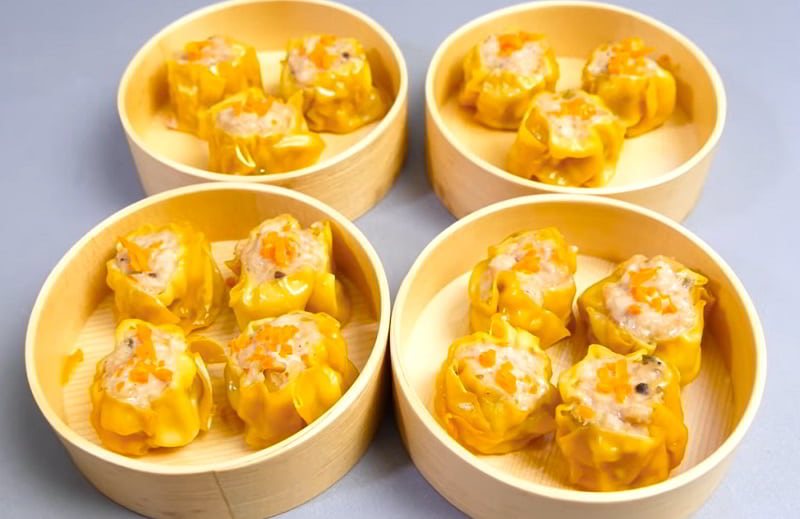
A dim sim is a type of snack food inspired by Chinese cuisine, widely enjoyed in Australia and occasionally in New Zealand. Originating from a Chinese immigrant in Melbourne, with roots tracing back to Guangdong province, these dumpling-style snacks have gained popularity. Typically, dim sims are made with minced meat, cabbage, and seasonings enclosed in a wrapper resembling a traditional siu mai dumpling. They come in cylindrical or larger, globular shapes and can be steamed or deep-fried. Dim sims are often served with soy sauce or sweet chili sauce, adding a flavorful touch to their savory filling and crispy exterior.
Bakso
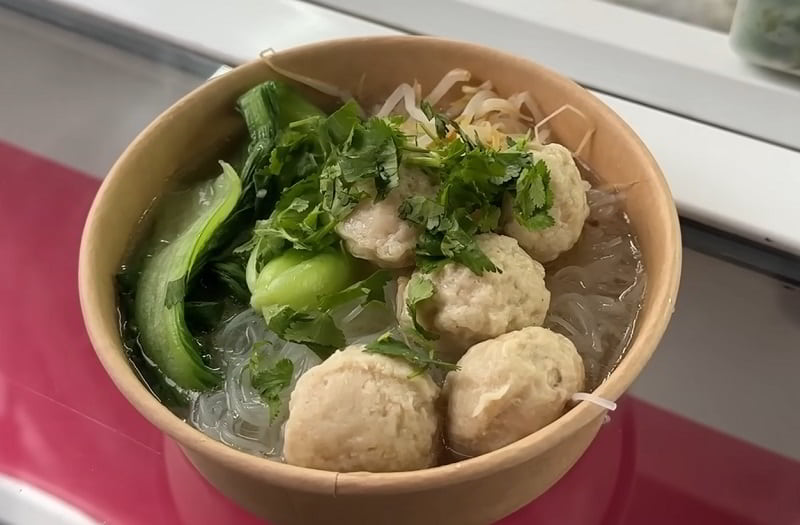
Bakso is a fusion of Indonesian and Chinese cuisines. This hearty dish features meatballs made from ground beef or chicken, mixed with tapioca flour and various spices, giving them a tender yet springy texture. Served in a flavorful broth, often made from beef bones and spices like garlic, ginger, and star anise, it's accompanied by noodles, vegetables, and condiments like sambal (chili paste) and soy sauce.
Egg Drop Soup
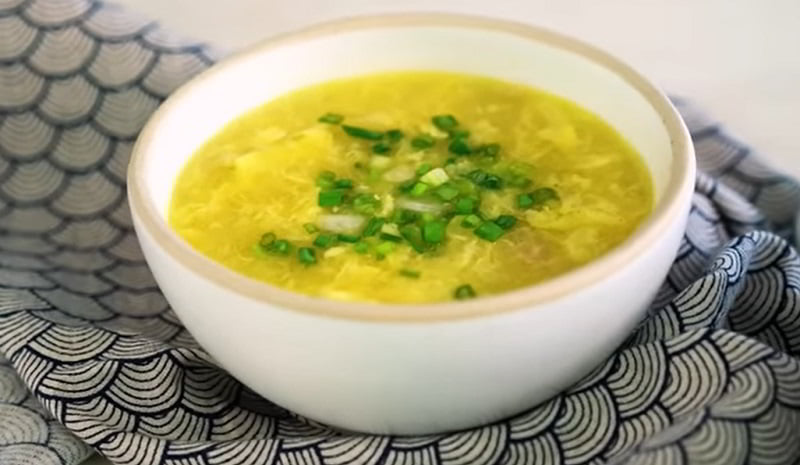
Egg drop soup is a popular and comforting Chinese fusion dish that combines traditional Chinese flavors with modern culinary techniques. This soup is known for its silky texture and rich flavors. The base of the soup is a savory chicken or vegetable broth that is seasoned with a combination of soy sauce, ginger, garlic, and sesame oil. The key ingredient, as the name suggests, is the eggs. The eggs are beaten and then slowly poured into the hot broth, creating delicate ribbons of cooked egg throughout the soup. To add more depth to the dish, additional ingredients such as mushrooms, bamboo shoots, tofu, and green onions can be added.
Lomo Saltado
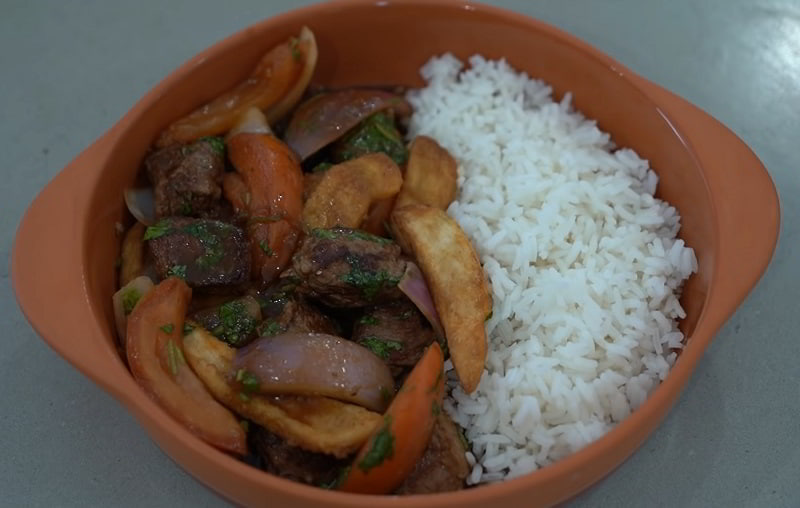
Lomo saltado is a popular dish in Chinese fusion cuisine that originated in Peru. This delectable dish combines the best of Chinese and Peruvian flavors, creating a unique and mouthwatering experience. Lomo saltado typically consists of stir-fried beef, onions, tomatoes, and french fries, all tossed together in a savory sauce. The beef is seasoned with a blend of Chinese spices, giving it a rich and aromatic taste. The onions and tomatoes add a burst of freshness and juiciness to the dish, while the french fries provide a delightful crunch. The sauce is the star of the show, combining soy sauce, vinegar, and various seasonings to create a tangy and savory flavor profile.
Pineapple Bun

The Pineapple Bun, also known as "bo lo bao" in Chinese, is a beloved sweet bread that originated in Hong Kong and has gained popularity across China and beyond. Despite its name, the bun does not actually contain pineapple. Instead, its name comes from the unique crust that resembles the texture of a pineapple's skin. The bun itself is soft, fluffy, and has a slightly sweet and buttery taste. What sets this dish apart is the crunchy and crumbly topping, made from a mixture of flour, sugar, and lard. This delightful topping is placed on the bun before baking, creating a wonderful contrast in texture with every bite. Pineapple buns are commonly enjoyed as a breakfast or snack, often served with a slab of butter in the center, which melts into the warm bread.
Singapore-Style Noodles
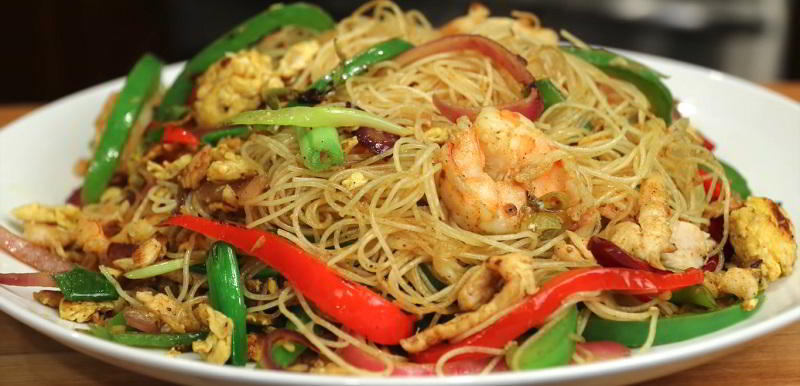
Singapore-style noodles is a popular Chinese fusion dish that has become a staple in Singaporean cuisine. This delectable dish showcases the influence of Cantonese flavors combined with local Singaporean ingredients and culinary techniques. The dish typically consists of stir-fried vermicelli noodles, also known as bee hoon, mixed with an array of colorful vegetables such as bell peppers, carrots, and bean sprouts. The noodles are seasoned with a fragrant blend of soy sauce, curry powder, and other spices, giving them a distinct and tantalizing flavor. To add a touch of meaty goodness, Singapore-style noodles often include tender slices of barbecued pork, succulent shrimp, or even chunks of chicken. These protein options complement the noodles perfectly, adding richness and depth to the dish.
Sesame Chicken
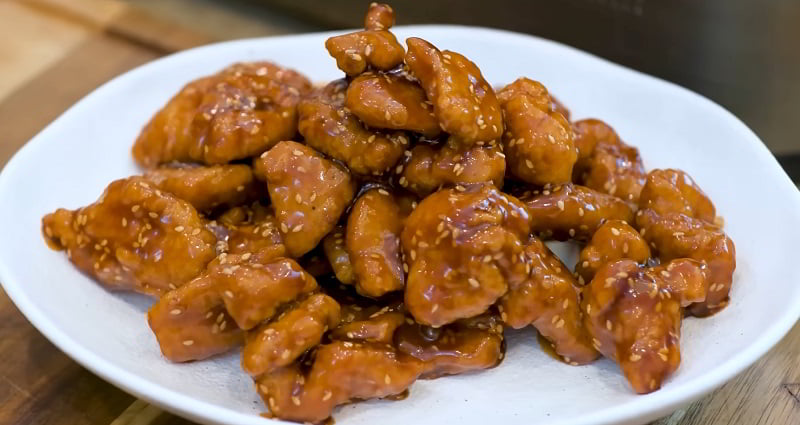
Sesame chicken is a popular dish in Chinese restaurants across the United States and Canada, akin to General Tso's chicken but with a sweeter flavor profile. Typically made with deboned chicken thighs, they are coated in batter, deep-fried in the Chinese style, and then coated in a glossy, reddish-brown sauce. This sauce is crafted from a mixture of corn starch, vinegar, wine or sake, chicken broth, and sugar, contributing to its distinctive sweetness. The dish is garnished with sesame seeds, either toasted or untoasted, lending it its name. While it may include vegetables like broccoli and baby corn, it's not always served with them.
Jjamppong
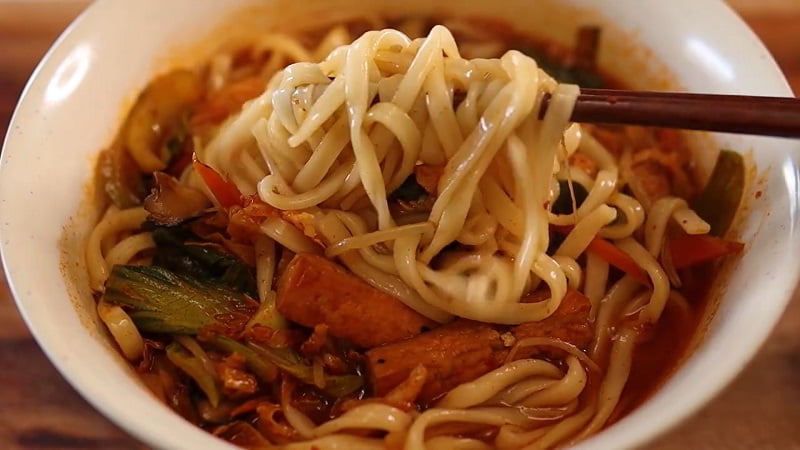
Jjamppong is a delicious and spicy Chinese fusion dish that has gained immense popularity in Korean cuisine. This dish is a perfect blend of Chinese-style noodles and Korean flavors, resulting in a unique and satisfying culinary experience. Jjamppong typically consists of thick, wheat-based noodles cooked in a rich and fiery red broth made from a combination of various ingredients such as gochugaru (Korean red chili pepper flakes), soy sauce, garlic, ginger, and seafood stock. The dish is then loaded with an assortment of fresh seafood, including mussels, squid, shrimp, and clams, giving it a delightful oceanic taste. Alongside the seafood, Jjamppong is often garnished with vegetables like cabbage, onions, and carrots, adding a pleasant crunch and vibrant colors to the dish.
Caldo Verde
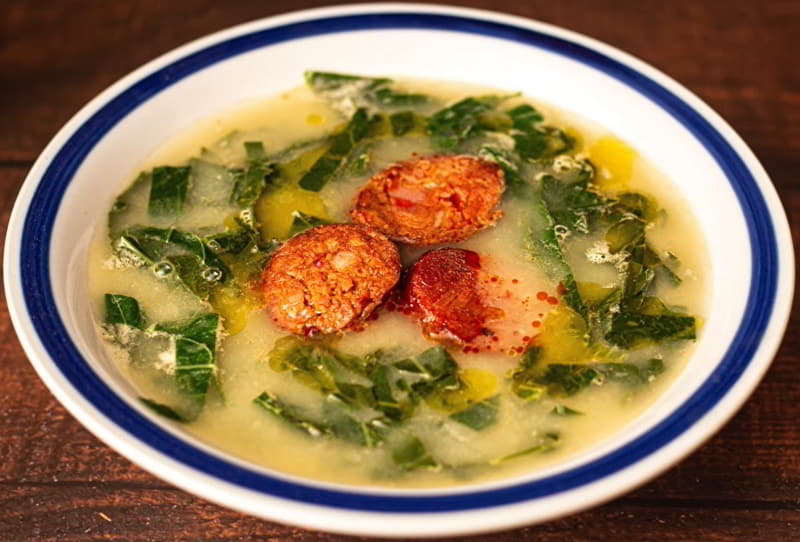
Caldo Verde is originally a Portuguese soup, which was popularized in China by the Potuguese settlers in Macau. At its heart, caldo verde is a hearty soup that features a base made from simmering potatoes until tender and then coarsely mashing them. Chinese flavors are introduced through the addition of aromatic spices like ginger and garlic, giving the dish a unique twist. The soup is then infused with traditional Portuguese elements, such as kale or collard greens, which add a vibrant green color and a refreshing taste. To enhance the flavors further, Chinese fusion cuisine often incorporates the use of Chinese sausage, providing a savory and slightly sweet element to the dish. This combination of ingredients creates a rich and comforting soup that is both satisfying and unique in its taste.
Takuan
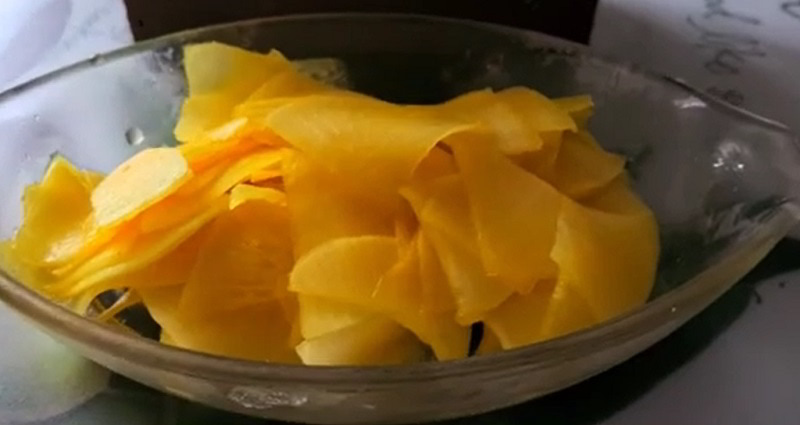
Takuan is a traditional fermented dish made from daikon radish. Prepared by pickling daikon in a mixture of salt, rice bran, and sometimes other seasonings, it undergoes a natural fermentation process over several weeks to months. The result is a tangy, crunchy pickle with a distinctive yellow color. Takuan is known for its crisp texture and refreshing taste, balancing the sweetness of the radish with the savory notes of fermentation.
Yaka Mein
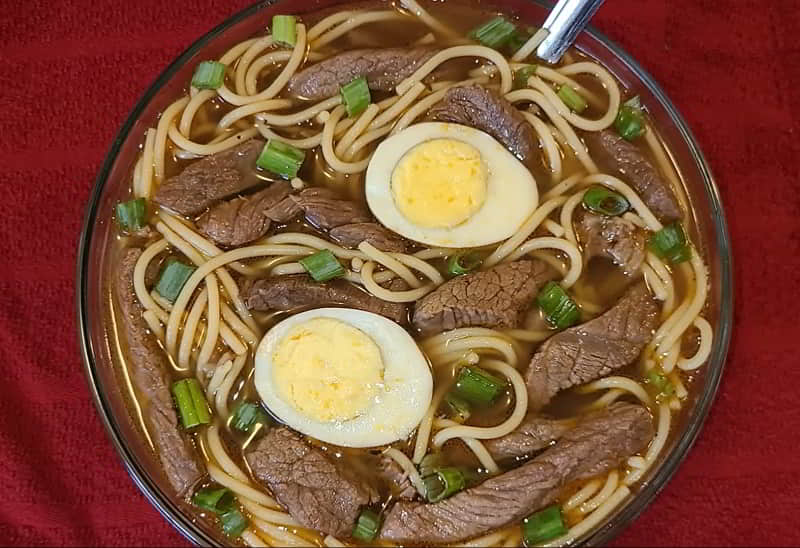
Yaka mein is a delectable Chinese fusion dish that has become popular in New Orleans and other parts of the United States. This unique dish combines elements of Chinese and Creole cuisine, resulting in a flavorful and satisfying meal. Yaka mein typically consists of noodles, beef, and a savory broth infused with spices and seasonings. The dish starts with a base of egg noodles, which are cooked until tender and then placed in a bowl. Thinly sliced beef is added on top of the noodles, providing a hearty and protein-rich component. The broth, often made with a combination of beef stock and soy sauce, is poured over the noodles and beef, infusing them with a rich and flavorful taste. To enhance the flavors, yaka mein is often garnished with an array of toppings such as green onions, chopped hard-boiled eggs, and a sprinkle of Creole seasoning. This combination of ingredients creates a harmonious blend of Chinese and Creole flavors, resulting in a truly unique and delicious fusion dish. Y
Bakpia

Bakpia is a delectable Chinese fusion dish that has become popular in Indonesian cuisine. Originating from the city of Yogyakarta, this pastry is a delightful combination of Chinese influences and local Indonesian flavors. Bakpia typically consists of a thin, flaky pastry shell filled with a sweet and savory filling. Traditionally, the filling is made from mung bean paste, mixed with sugar, and sometimes enhanced with crushed peanuts or sesame seeds. However, modern variations of Bakpia have introduced a wide range of fillings, including chocolate, cheese, durian, and even matcha. The pastry itself is made using a combination of wheat flour and lard, which gives it a unique texture and flavor. It is then rolled out thinly and filled with the desired filling before being folded into a small rectangular shape and baked until golden brown.
Cha Siu Bao

Cha siu bao, also known as Chinese barbecue pork buns, is a beloved and satisfying dish in Chinese cuisine. These bread buns are soft and fluffy, filled with a delicious combination of sweet and savory char siu, a Cantonese-style barbecued pork. The bread dough is made with flour, yeast, sugar, and milk to create a light and airy texture. Once the dough rises, it is shaped into individual buns and filled with the flavorful char siu filling. The filling is made by marinating diced pork in a mixture of honey, soy sauce, hoisin sauce, and spices, then cooked until tender and caramelized. Cha siu bao can be steamed or baked, depending on preference. Steaming results in a soft and moist texture, while baking gives a slightly crispy exterior. These buns are often enjoyed as a snack or dim sum item, alone or with other dishes. With its combination of fluffy bread and succulent pork filling, cha siu bao showcases the delicious flavors of traditional Chinese cuisine.
Dried Shredded Squid
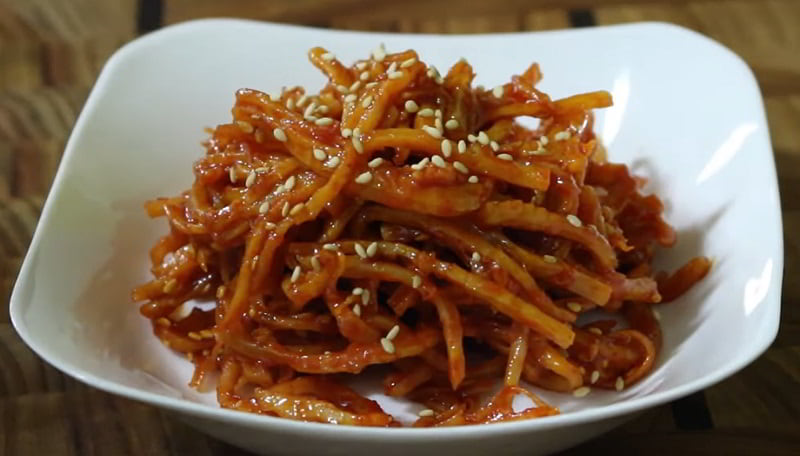
Dried shredded squid is a popular snack in Chinese fusion cuisine. This dish starts with squid that is first cleaned and then sliced into thin strips. These strips are then marinated using a combination of soy sauce, sugar, and various spices such as garlic and ginger. After marination, the squid is sun-dried until it becomes chewy and crispy. The dried shredded squid dish offers a delightful combination of sweet, savory, and slightly spicy flavors. The soy sauce marinade adds a rich umami taste, complemented by the natural sweetness of the squid. The spices add a subtle kick, enhancing the overall flavor profile. In terms of texture, the dish is a delightful contrast between the chewy and slightly tough texture of the dried squid and the crispy edges where it has been dried. This interplay of textures adds an enjoyable eating experience.
Manchow Soup
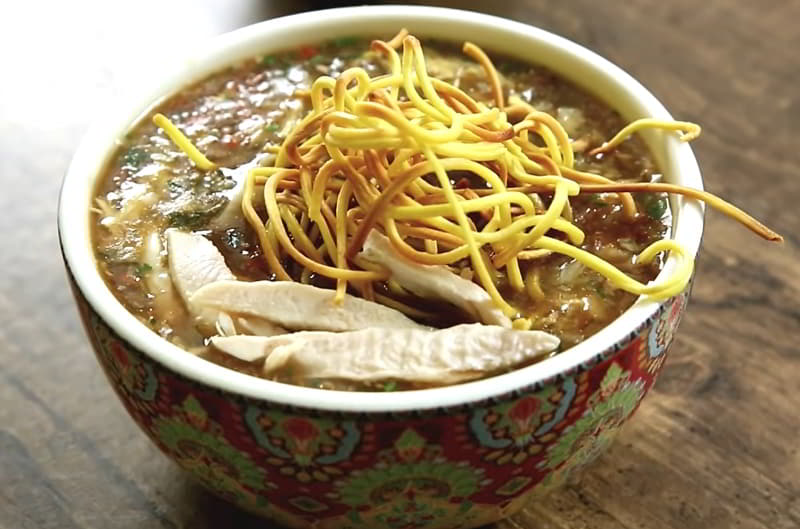
Manchow soup, a popular dish in Indian Chinese cuisine, is renowned for its quick preparation and spicy flavor. Widely available in restaurants and street food stalls, it's a favorite among soup lovers. Despite its name referencing Manchuria, the soup's origins trace back to Meghalaya. This dark brown soup is crafted with a medley of vegetables, scallions, and chicken, thickened with broth and corn flour. Its distinct flavor comes from generous additions of soy sauce, garlic, chili peppers, and ginger. Served with crispy fried noodles and garnished with chopped spring onions, Manchow soup offers a satisfying blend of warmth and spice, suitable for both vegetarians and non-vegetarians.
Chahan
-1708989260.jpg)
Chahan, a popular Chinese fusion dish, is a delightful combination of flavors and textures that originated in Japan but draws inspiration from Chinese cuisine. This delectable dish is essentially a fried rice preparation, but with a unique twist. Chahan typically consists of cooked rice stir-fried with an assortment of vegetables, meat, and various seasonings. The key to the success of Chahan lies in its simplicity and versatility. It can be made with a wide range of ingredients, depending on personal preferences and regional variations. Common ingredients include diced carrots, peas, onions, garlic, and proteins like chicken, beef, or shrimp. The dish is typically seasoned with soy sauce, sesame oil, and a pinch of white pepper, giving it a distinct umami flavor.
Bakkwa
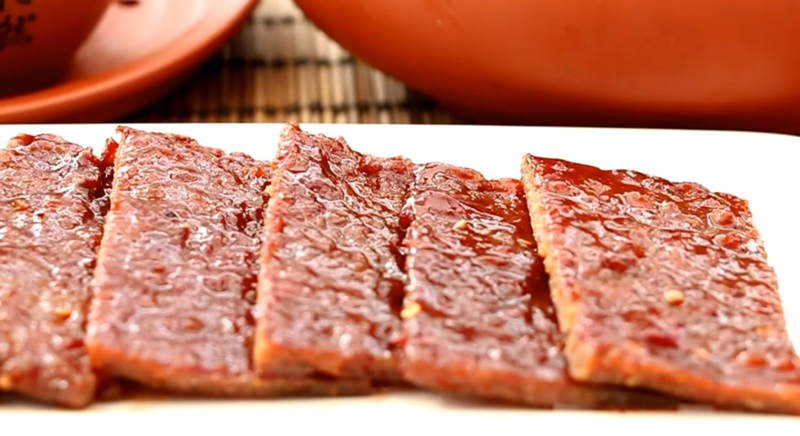
Bakkwa, or Chinese dried meat, is a well-loved delicacy commonly savored during Chinese New Year festivities. This delectable treat is crafted by thinly slicing meat, typically pork, and marinating it in a blend of sugar, soy sauce, spices, and seasonings. The meat is then dried and grilled over charcoal, resulting in a smoky and subtly charred flavor. Bakkwa boasts a unique texture that combines chewiness with tenderness, making it perfect as a snack or ingredient in various dishes. During Chinese New Year, it is often exchanged as a gift among loved ones, symbolizing good luck and prosperity for the upcoming year. Not only is bakkwa cherished for its taste, but it also holds symbolic significance. Its name, sounding similar to the Chinese word for "wealth," makes it an auspicious choice during the festive season.
Chicken Lollipop

Chicken lollipop is a beloved Indo-Chinese fried chicken appetizer, renowned for its unique appearance and spicy flavor. It begins with a frenched chicken winglet, where the meat is detached from the bone end and pushed down to resemble a lollipop. Recipes may vary, but typically, the middle segment of the chicken wing or thigh is used. After removing one of the two bones, the flesh is pushed to one end of the bone, creating the lollipop shape. These chicken pieces are then coated in a spicy red batter, often featuring ingredients like red chili powder and turmeric, before being marinated for a few hours. They are commonly deep-fried in oil, although baking is also an option, sometimes with the exposed bone wrapped in aluminum foil.
Arroz Chaufa
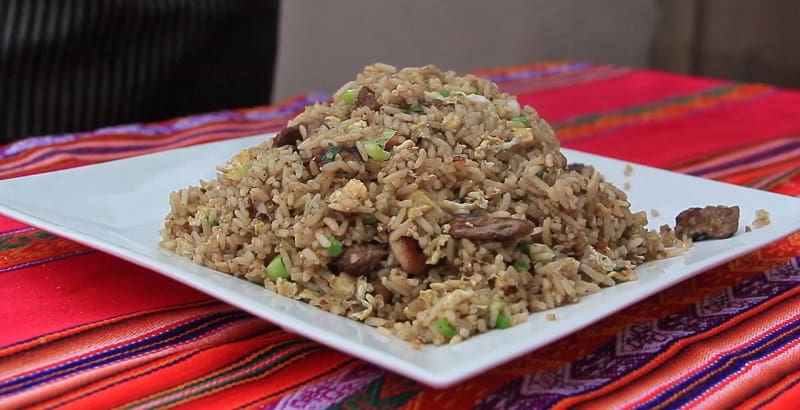
Arroz Chaufa is a delicious and popular Chinese fusion dish that has become a staple in Peruvian cuisine. It is a perfect blend of Chinese and Peruvian flavors, creating a unique and mouthwatering culinary experience. The dish is essentially a fried rice preparation, but with a Peruvian twist. It typically consists of cooked rice stir-fried with a variety of ingredients such as soy sauce, garlic, ginger, onions, scrambled eggs, and a choice of meat or seafood. The protein options can vary from chicken, beef, pork, or shrimp, depending on personal preference. What sets arroz chaufa apart from traditional fried rice is the addition of Peruvian ingredients like aji amarillo (a spicy yellow chili pepper) and cilantro. These ingredients add a distinct flavor and vibrant color to the dish, creating a harmonious fusion of Chinese and Peruvian culinary traditions.
St. Paul sandwich

The St. Paul sandwich is a unique and delicious dish that can be found in Chinese American restaurants in St. Louis, Missouri. This sandwich is a perfect example of the blending of American and Chinese flavors and ingredients. The St. Paul sandwich typically consists of a fluffy egg foo young patty that is made with bean sprouts, onions, and various meats such as ham, pork, or chicken. This patty is then placed between two slices of white bread that is often slathered with mayonnaise and topped with lettuce, tomato, and pickles.
Lomi
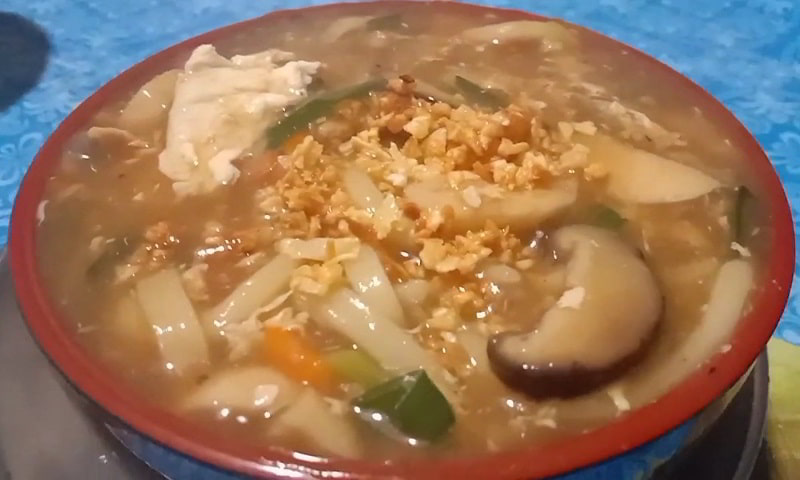
Lomi is a hearty Chinese-Filipino noodle soup celebrated for its comforting flavors and satisfying texture. This dish features thick egg noodles immersed in a rich, flavorful broth made from chicken or pork stock, often infused with garlic, onions, and sometimes ginger. Various ingredients such as sliced pork, chicken, shrimp, or vegetables like cabbage and carrots add depth to the soup. Lomi is typically garnished with crispy fried garlic, chopped scallions, and a squeeze of calamansi or lemon, elevating its savory and citrusy profile.
Ngo Hiang
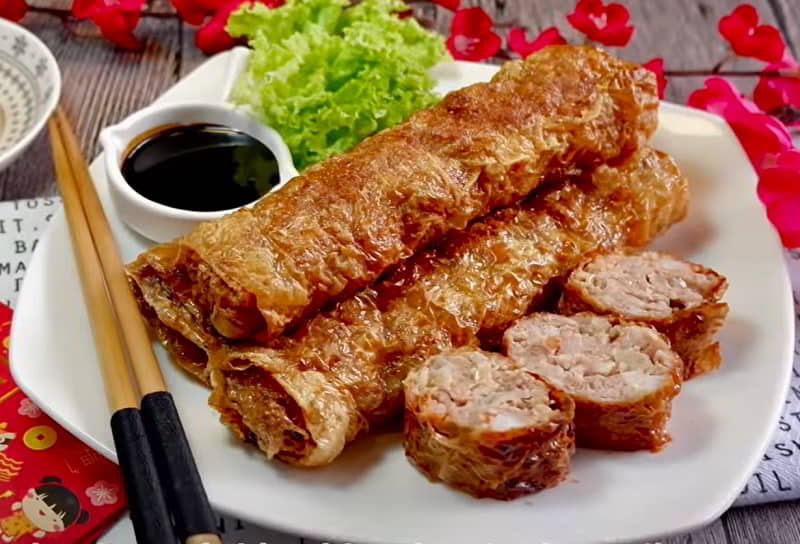
Ngo hiang, a delightful dish, is a fusion of Chinese and Indonesian influences. It features a delectable meat roll made from a blend of ground pork, succulent prawns, and a medley of seasonings. The filling is then carefully encased in bean curd skin or spring roll wrappers and deep-fried to perfection until it achieves a golden, crispy exterior. Within lies a juicy and flavorful interior that captivates the senses. Ngo hiang is often accompanied by a tangy and sweet sauce crafted from soy sauce, garlic, and vinegar. What sets Ngo hiang apart is its harmonious blend of flavors and textures. The prawns infuse the dish with a delightful umami taste, while the pork lends a rich and savory essence. The seasonings, including five-spice powder, garlic, and ginger, add depth and complexity to every bite. Ngo hiang is commonly served as an appetizer or incorporated into a larger meal.
Serradura

Serradura, also known as "Sawdust Pudding," is a classic Portuguese dessert renowned for its simplicity and delightful taste. Hailing from Macau, it has gained popularity worldwide. This sweet treat comprises layers of finely crushed tea biscuits alternated with creamy whipped sweetened condensed milk. The biscuits are often flavored with vanilla or cinnamon, lending a fragrant touch to the dessert. Once assembled, the dessert is chilled until set, allowing the flavors to meld together harmoniously. Serradura is beloved for its velvety texture and subtle sweetness, making it a beloved indulgence that captures the essence of Portuguese and Macanese culinary traditions.
Siomay
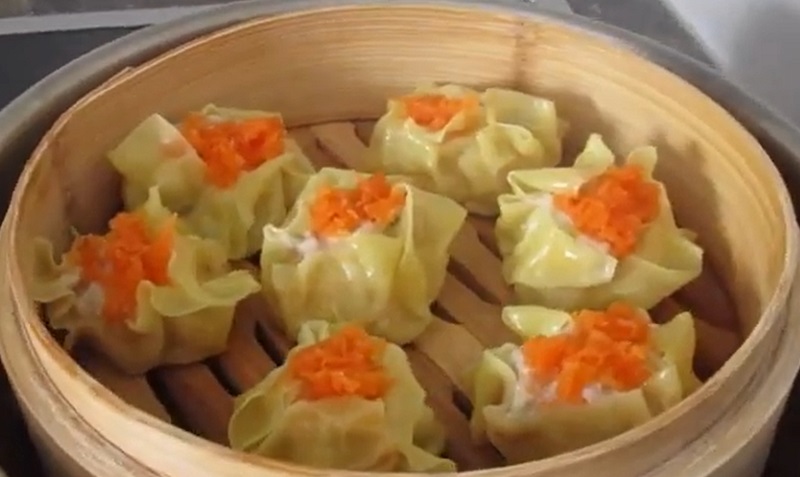
Siomay is a fusion of Indonesian and Chinese cuisines. Siomay typically consists of steamed dumplings filled with a mixture of ground meat, usually chicken or shrimp, along with vegetables such as cabbage, carrots, and mushrooms. The dumplings are then topped with a savory peanut sauce and garnished with fried shallots and cilantro. What sets Siomay apart is its combination of different flavors and textures. The tender and juicy meat, combined with the crunchy vegetables, creates a delightful contrast. The peanut sauce adds a rich and nutty flavor that complements the other ingredients perfectly. Siomay is often served as a street food snack or as part of a larger meal.
Siu mei
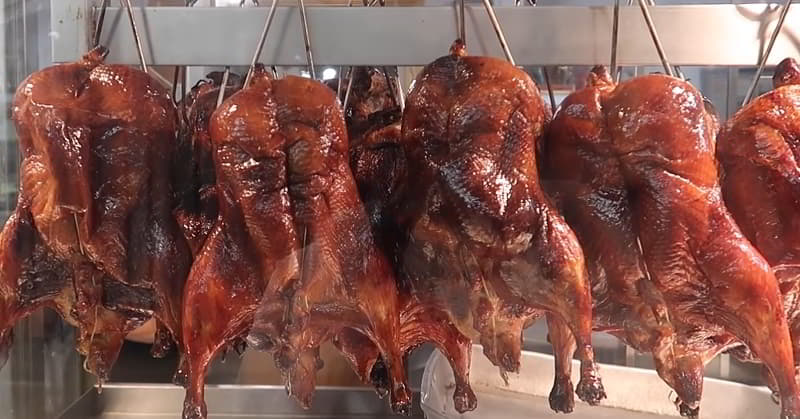
Siu mei is a popular Chinese fusion dish that combines traditional Cantonese cooking techniques with modern flavors. This delectable dish is known for its succulent roasted meats, including char siu (barbecue pork), siu yuk (roast pork belly), and siu ngaap (roast duck). The preparation of siu mei involves marinating the meats in a flavorful mixture of soy sauce, hoisin sauce, honey, and various spices. The meats are then roasted to perfection, resulting in a crispy and caramelized exterior, while the inside remains tender and juicy. Siu mei is typically served with a side of steamed rice, along with a variety of accompanying sauces such as plum sauce, oyster sauce, or chili sauce. The combination of the smoky and savory flavors of the meat, along with the sweet and tangy sauces, creates a harmonious explosion of taste. This dish is not only visually appealing, with its glossy and glistening appearance, but it also offers a delightful contrast of textures and flavors. Siu mei is a delicious and satisfying fusion dish that showcases the best of Cantonese cuisine with a modern twist.
Bang Bang Chicken
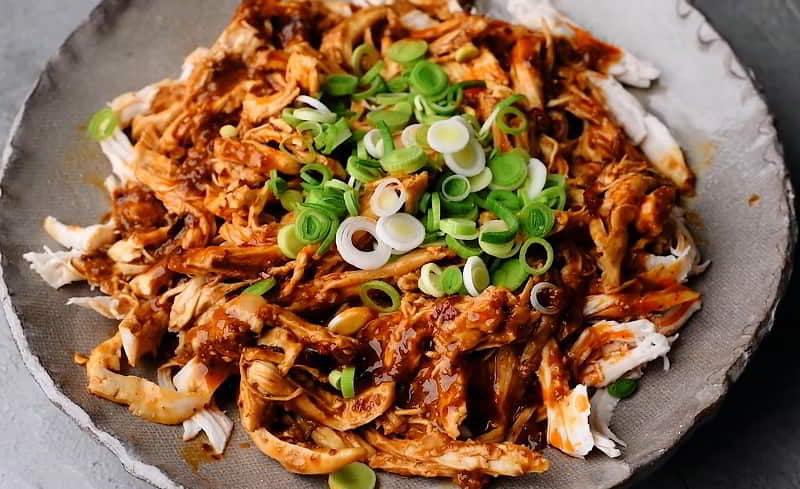
Bang bang chicken is a well-loved dish in Chinese culinary tradition. Its name originates from the Chinese word for stick, "bàng," which refers to the traditional method of tenderizing the meat with a baton or cudgel. To prepare bang bang chicken, chicken is typically poached or steamed, then shredded by pounding it with sticks. Traditional recipes involve tossing the shredded meat in a sauce comprising sesame paste, chili oil, Sichuan pepper, and black vinegar, along with fresh herbs. Variations of the sauce may include ingredients like chile peppers, peanuts, garlic, ginger, and soy sauce. Julienned cucumbers are often served alongside as a refreshing accompaniment.
Cashew Chicken
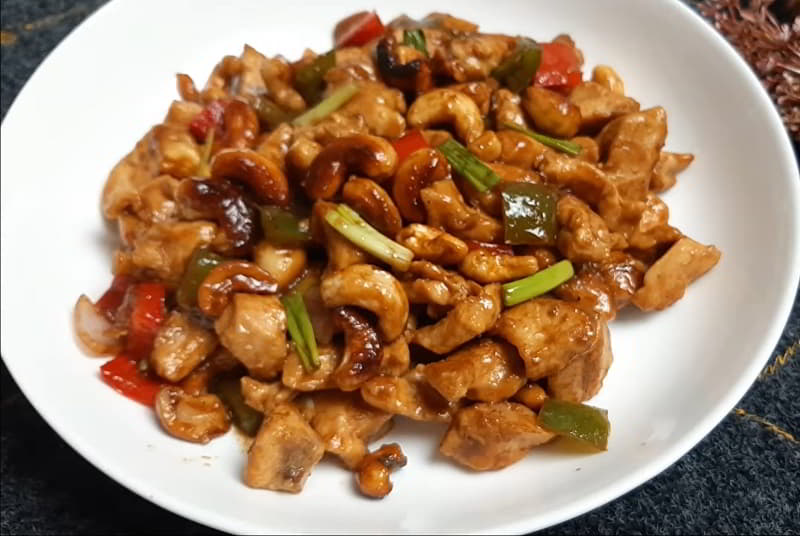
Cashew chicken is a popular Chinese-American dish featuring chicken, often stir-fried but sometimes deep-fried, paired with cashew nuts. The dish can be prepared with either a light brown garlic sauce or a thicker sauce crafted from chicken stock, soy sauce, and oyster sauce, depending on the recipe variation. The chicken is typically cooked until tender and infused with the savory flavors of the sauce, while the cashew nuts add a delightful crunch and nutty taste.
Lemon Chicken
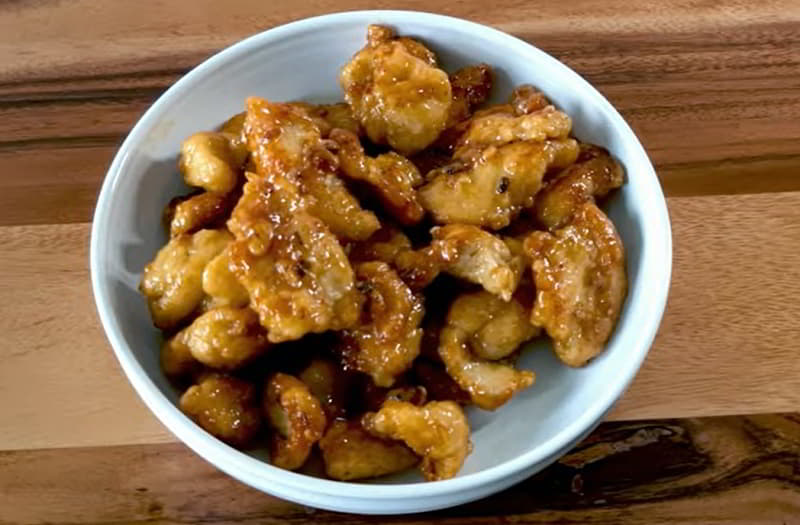
Lemon chicken is a delectable dish in Chinese cuisine celebrated for its vibrant flavors. Tender chicken pieces are typically battered and fried until crispy, then coated in a tangy lemon sauce. The sauce, made with fresh lemon juice, sugar, soy sauce, and sometimes vinegar or honey, delivers a perfect balance of sweet and sour notes. Its bright and zesty flavor profile, combined with the crispy texture of the chicken, creates a harmonious culinary experience. Lemon chicken is often garnished with sliced green onions or sesame seeds, adding a touch of freshness and visual appeal to this beloved Chinese dish.
Mami Soup
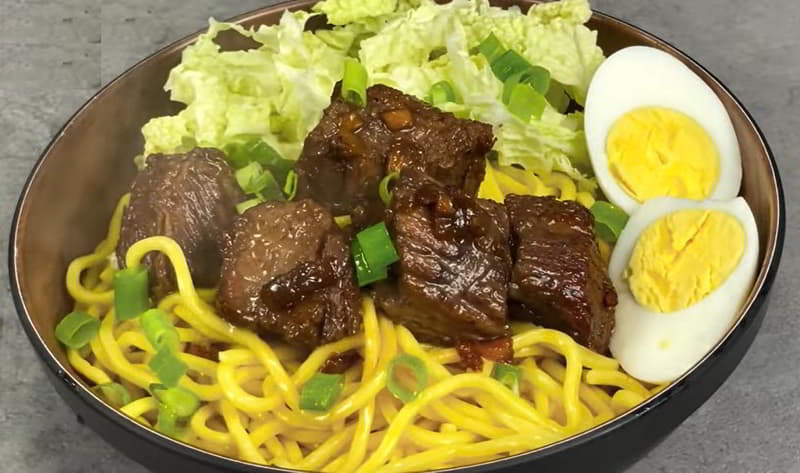
Mami soup is a delectable dish that represents the fusion of Chinese and Filipino cuisines. This savory soup is a popular street food in the Philippines, influenced by the Chinese noodle soup tradition. Mami soup typically consists of a flavorful broth made from slow-cooked chicken or beef bones, infused with Chinese spices and herbs like star anise and ginger. What sets Chinese fusion Mami soup apart is the addition of Filipino ingredients and flavors. The soup is usually filled with generous portions of tender meat, such as beef brisket or chicken, along with fresh egg noodles, bok choy, and spring onions. Some variations also include toppings like fried garlic, soy sauce, and chili sauce to add an extra kick of flavor.
Subgum
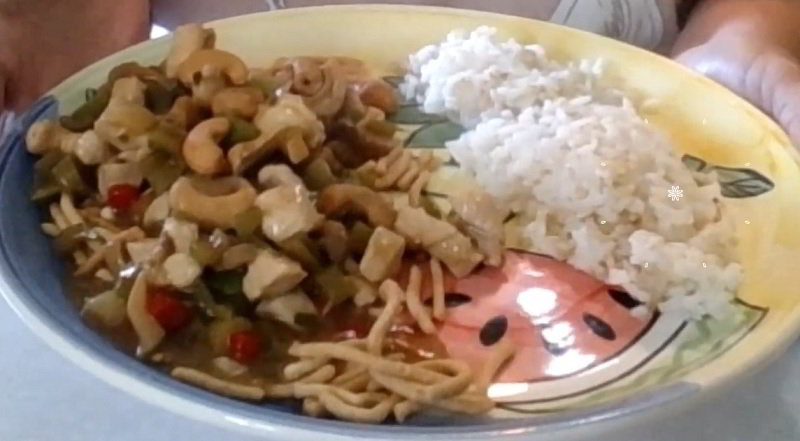
Subgum, a delightful dish with its origins in Cantonese cuisine, can be found on menus in Chinese restaurants throughout North America. This dish enchants diners with its harmonious mix of meats, seafood, colorful vegetables, and sometimes rice, noodles, or soup. Known for its versatility and bold flavors, subgum showcases the skillful blending of textures and tastes that define Cantonese cooking.
The term "subgum" encompasses a range of delicious combinations that highlight the creativity of Cantonese chefs. Each variation of subgum offers a unique blend of ingredients, providing diners with a delightful array of flavors. Whether it's the succulent meats, the savory seafood, or the fresh crispness of vegetables, subgum represents the culinary excellence of Cantonese cuisine, admired for its ability to transform simple ingredients into a gratifying and delicious dining experience.
Tauco
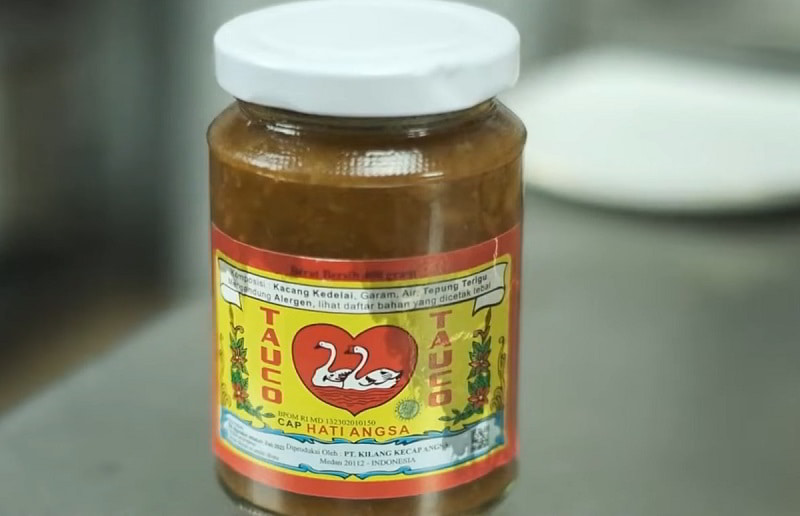
Tauco, originating from Indonesia, is a fermented soybean paste cherished for its rich umami flavor and versatility in Indonesian cuisine. Made by fermenting cooked soybeans with salt and a starter culture called "ragi tempe," it develops a deep, savory taste over time. Tauco adds depth to dishes, enhancing their flavor profile with its complex notes. Commonly used in stir-fries, soups, and marinades, it imparts a unique savory kick to various dishes.
Tangsuyuk
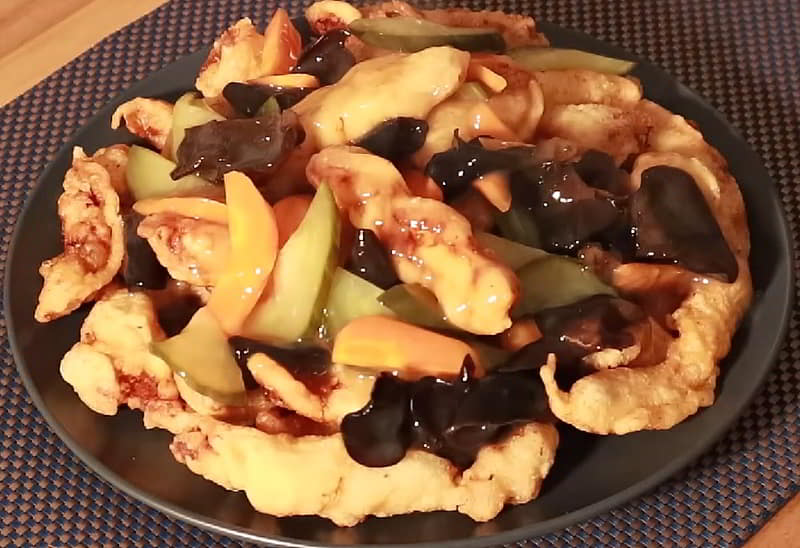
Tangsuyuk is a popular Chinese fusion dish that has become a staple in Korean cuisine. This mouthwatering dish consists of deep-fried pieces of meat, typically pork or beef, that are coated in a sweet and sour sauce. The meat is first marinated and then lightly battered before being deep-fried to perfection, resulting in a crispy and tender texture. The sauce used in Tangsuyuk is what truly sets it apart. It is a delightful blend of sweet and tangy flavors, created from a mixture of vinegar, sugar, soy sauce, and various vegetables like onions, carrots, and bell peppers. The sauce is cooked until it thickens, creating a glossy and sticky coating that perfectly complements the crispy meat. Tangsuyuk is often served with a side of steamed rice, making it a satisfying and complete meal.
Pepper Steak
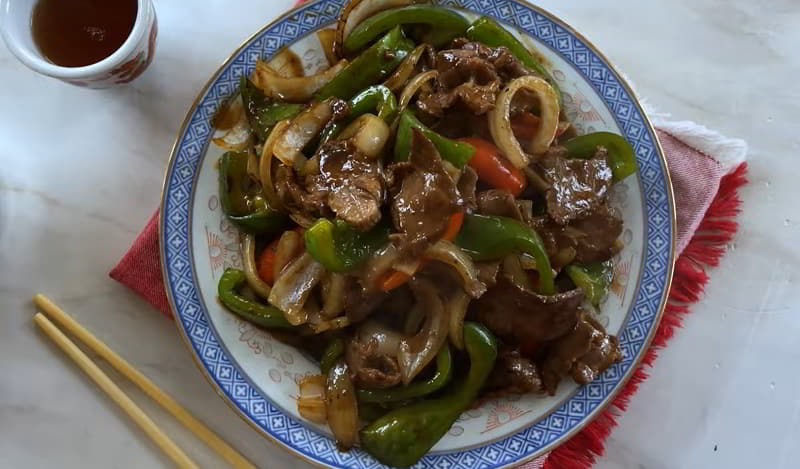
Pepper steak is a popular dish in Chinese fusion cuisine that combines the bold flavors of Chinese and Western cooking. This mouthwatering dish typically features tender strips of beef, stir-fried with a medley of colorful bell peppers, onions, and a rich sauce. The beef is often marinated in a savory mixture of soy sauce, garlic, ginger, and spices, which infuses it with a deep, umami flavor. The meat is then stir-fried until it is perfectly cooked and retains its tenderness. The star of this dish is the vibrant combination of bell peppers, which adds a pop of color and a crisp texture to each bite. The peppers are usually sliced into strips and stir-fried alongside the beef, creating a beautiful visual contrast. To enhance the flavors, a tangy and slightly sweet sauce is added to the dish. This sauce is typically made from a blend of soy sauce, oyster sauce, and sometimes a touch of vinegar or hoisin sauce. It adds a delicious richness to the dish and helps to bring all the flavors together.
Pancit Malabon
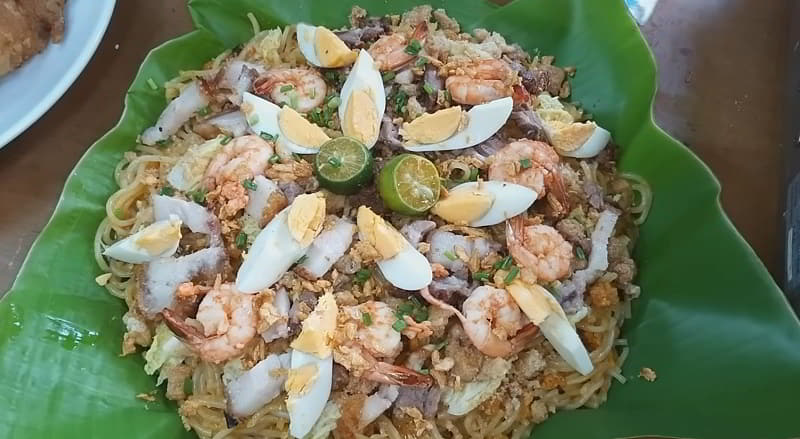
Pancit Malabon is a popular Chinese fusion dish that originates from the city of Malabon in the Philippines. This unique dish combines Chinese flavors with local Filipino ingredients, resulting in a delicious and satisfying meal. Pancit Malabon is made with thick rice noodles, which are stir-fried with an assortment of ingredients such as shrimp, squid, pork, and vegetables. The dish is then flavored with a savory sauce made from soy sauce, fish sauce, and various spices. It is garnished with crushed chicharon (pork cracklings), boiled eggs, and fresh green onions, adding texture and additional flavor.
Bakmi
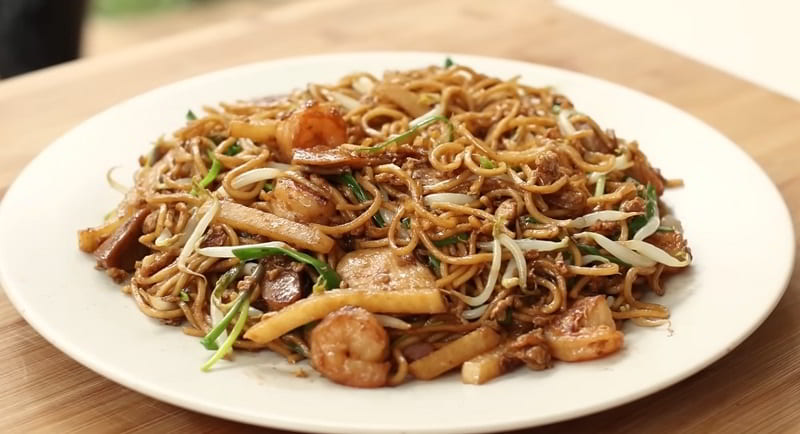
Bakmi, a popular Chinese fusion dish, is a delightful combination of traditional Chinese flavors with Indonesian culinary influences. This noodle-based dish has its roots in Chinese cuisine, specifically the famous Cantonese dish called "wonton noodle soup." However, Indonesian chefs have creatively incorporated local ingredients and cooking techniques to create a unique and delicious fusion. The star of Bakmi is the egg noodles, which are cooked to perfection and then stir-fried with a medley of vegetables such as bok choy, carrots, and bean sprouts. The noodles are often topped with tender slices of chicken, beef, or pork, adding a delightful protein element. To enhance the flavors, various condiments like soy sauce, oyster sauce, and sesame oil are added, giving the dish a distinct Chinese touch. Indonesian influences are evident in the addition of spices like garlic, ginger, and shallots, which infuse the dish with a fragrant aroma. Bakmi is often garnished with crispy fried shallots and served with a side of homemade chili sauce, allowing diners to customize the spiciness according to their preferences.
Odong
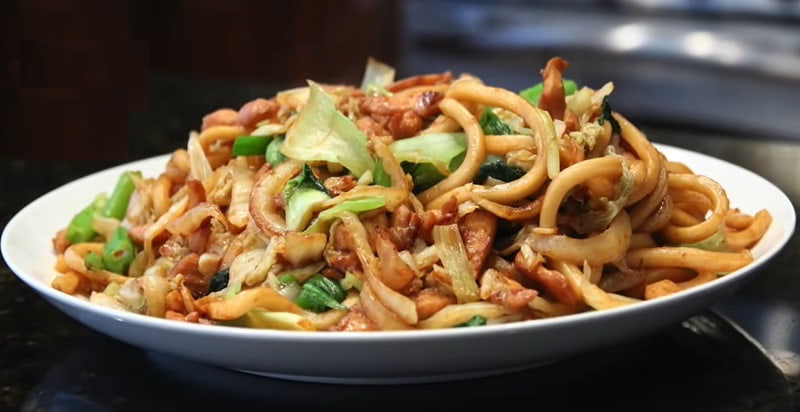
Odong is a traditional noodle soup originating from the Visayan region, featuring odong noodles cooked in a flavorful broth with canned smoked sardines (tinapa) in tomato sauce, bottle gourd (upo), loofah (patola), chayote, ginger, garlic, red onions, and assorted vegetables. It's seasoned with black pepper and garnished with scallions, toasted garlic, calamansi, or labuyo chilis for an added kick. While typically served as a soup, it can also be prepared with less water for a thicker consistency.
Shrimp Toast

Shrimp toast, a delightful Cantonese dim sum originating from Hong Kong, has gained popularity as a beloved appetizer in Western Chinese cuisine, delighting taste buds with its exquisite blend of flavors and textures. Crafted from small triangles of bread, this dish is transformed into a delectable treat by being coated in a paste made from minced shrimp. The culinary journey of shrimp toast concludes with either baking or deep frying, resulting in a crispy outer layer and a savory interior.
Goto (food)
-1709026826.jpg)
Goto is a delightful and flavorful Chinese fusion dish that has gained popularity worldwide. Originating from the Philippines, this hearty dish combines the best of Chinese and Filipino culinary traditions. Goto is a rice porridge made with glutinous rice cooked until creamy and tender. It is then infused with a rich and flavorful broth made from beef tripe, ginger, garlic, and onions. The fusion aspect of Goto comes from the addition of Chinese ingredients and techniques. Thinly sliced beef, pork, or chicken are often added to the porridge, providing a delicious protein element. To enhance the flavors, soy sauce, fish sauce, and calamansi juice are used, giving Goto its distinct umami taste. Garnished with spring onions, fried garlic, and boiled eggs, Goto is a complete meal in itself.
Mie Ayam
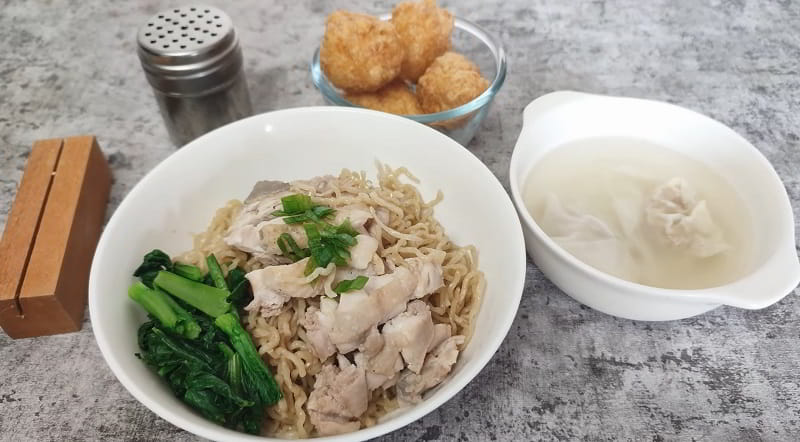
Mie ayam, also known as mi ayam or bakmi ayam, is a ubiquitous Indonesian delight featuring seasoned yellow wheat noodles crowned with diced chicken (ayam) meat. Rooted in Chinese culinary methods, this dish has seamlessly integrated into Indonesian cuisine, earning recognition as a beloved Chinese Indonesian classic. The dish showcases the culinary synergy resulting from the fusion of Chinese techniques and Indonesian tastes. The yellow wheat noodles, generously seasoned and complemented with succulent diced chicken, exemplify the harmonious blend of flavors and textures.
Kwetiau Goreng
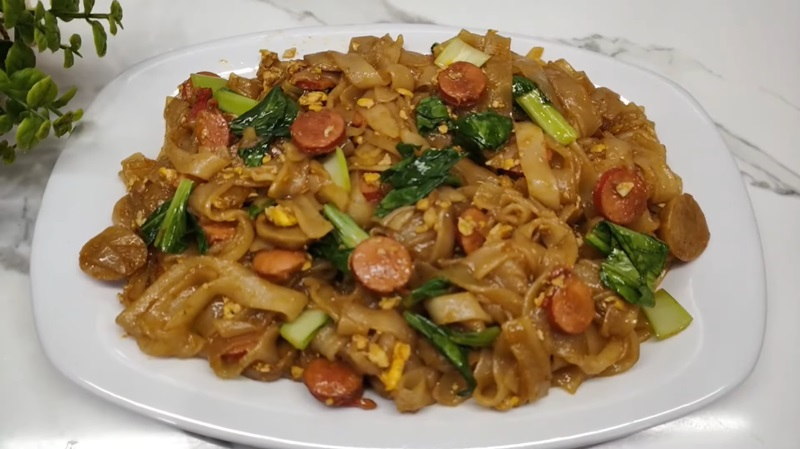
Kwetiau goreng is a delicious Chinese fusion dish that originates from Indonesia, combining the flavors and cooking techniques of both cultures. This popular stir-fried noodle dish is made with flat rice noodles, also known as kwetiau, which are stir-fried with an array of ingredients. Typically, Kwetiau goreng includes a variety of proteins such as chicken, shrimp, or beef, along with vegetables like cabbage, carrots, and bean sprouts. The dish is flavored with a combination of soy sauce, oyster sauce, and various spices, giving it a rich and savory taste. Chili can also be added for those who prefer a spicy kick. The noodles are stir-fried in a hot wok, ensuring they are cooked evenly and have a slightly chewy texture. This cooking technique allows the flavors to infuse into the noodles, creating a harmonious blend of tastes.
Bubur Ayam
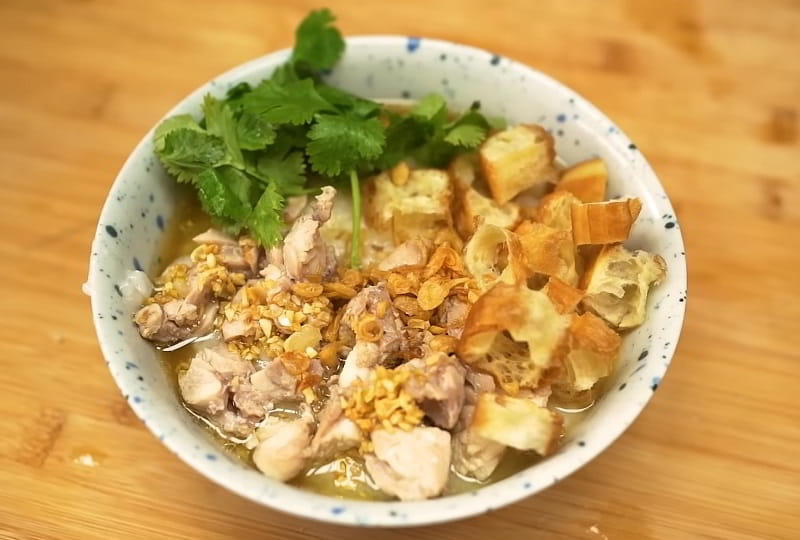
Bubur ayam is a delightful and comforting dish that combines the flavors of Chinese and Indonesian cuisine. Bubur ayam consists of a warm and creamy rice porridge, cooked with chicken broth until it reaches a smooth and hearty consistency. The porridge is then topped with shredded chicken, crispy fried shallots, chopped scallions, and soy sauce. The Chinese influence can be seen in the use of soy sauce, which adds a savory umami flavor to the dish. The shredded chicken is reminiscent of Chinese-style chicken dishes, while the fried shallots give a crispy texture and aromatic taste. The Indonesian touch comes in the form of garnishes like chopped scallions and sambal, a spicy chili paste that adds a kick of heat to the dish. These elements combine to create a harmonious fusion of Chinese and Indonesian flavors.
Ginger Beef
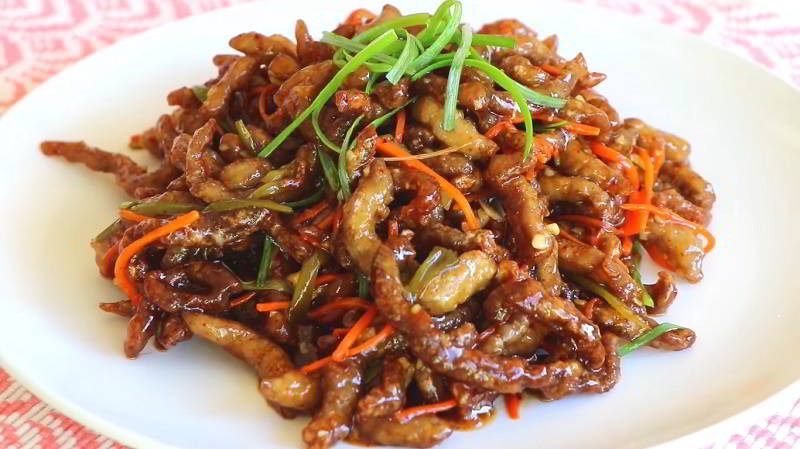
Ginger beef, a cherished Canadian Chinese dish, is known for its delicious combination of ginger-infused beef and a special sweet sauce that sets it apart. The ingredients used can vary depending on regional influences, with the Alberta style typically including deep-fried beef strips coated in a dark, sweet sauce reminiscent of various Asian sauces with a base of vinegar and sugar. Enhanced by the fragrant flavors of garlic, ginger, and a hint of spice from hot peppers, this dish is often garnished with julienned carrots and onions, adding to both its visual appeal and taste. Evolving from the original Geung Ngao Yuk, ginger beef has become a staple in Canadian Chinese cuisine, showcasing a delightful blend of flavors that has earned widespread acclaim. Its crispy texture, tender beef, and unique sauce all contribute to its popularity, making it a delicious representation of the culinary fusion found in Canadian Chinese gastronomy.
Cap cai
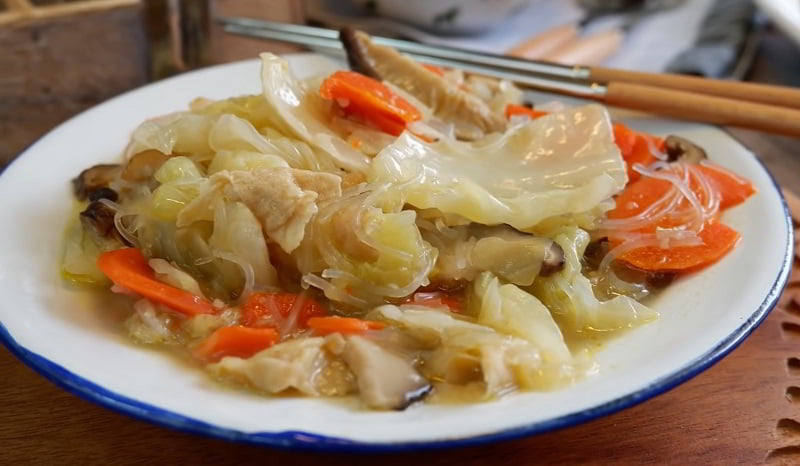
Cap cai is a beloved stir-fried vegetable dish deeply rooted in Chinese, Indonesian and Peranakan culinary traditions. This flavorsome creation involves a medley of vegetables, including carrot, baby corn, mushrooms, cauliflower, cabbage, Chinese cabbage, Napa cabbage, and leeks, expertly stir-fried in a wok with a minimal amount of cooking oil and water. To enhance the taste, a blend of chopped garlic, onions, soy sauce, salt, sugar, Chinese cooking wine (ng ciu), and oyster sauce is incorporated, creating a harmonious symphony of flavors. The sauces are then thickened using corn starch, resulting in a luscious texture.
Cap cai offers versatility, with variations including vegetarian renditions or combinations with meats like beef, fish, shrimp, cuttlefish, chicken, liver, gizzard, and slices of beef or fish bakso (meatballs). While recipe variations abound, common vegetables such as cauliflower, cabbage, and carrot form the foundation of this delectable dish.
Babi Panggang
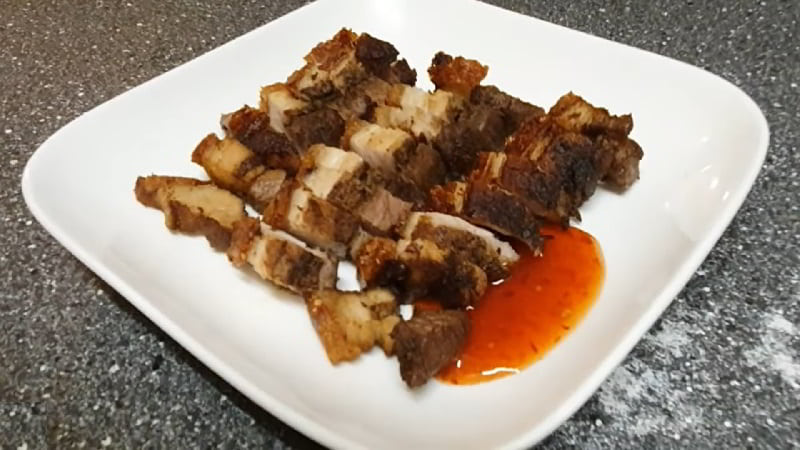
Babi panggang, known as "grilled pork" in English, is actually prepared by roasting the pork. The dish consists of succulent pork belly marinated in a flavorful mixture of spices, including garlic, ginger, soy sauce, and five-spice powder. The marinated pork is then roasted until the skin becomes crispy and golden brown, while the meat remains juicy and tender. Babi panggang is beloved for its contrasting textures and bold flavors. The crispy skin offers a satisfying crunch, while the meat is rich, savory, and sometimes slightly sweet. The marinade infuses the pork with a delightful aroma and enhances its taste. This dish is often served with steamed rice and a side of vegetables such as bok choy or Chinese broccoli.
Salt and Pepper Chips

Salt and pepper chips is a delectable Chinese fusion dish that combines the crispy texture of chips with the bold flavors of Chinese cuisine. This dish originated from the Cantonese region and has gained popularity worldwide for its unique and tantalizing taste. The dish starts with thick-cut potato chips that are deep-fried to perfection, resulting in a crispy and golden exterior. What sets salt and pepper chips apart is the seasoning. It is typically seasoned with a blend of salt, black pepper, garlic powder, and other aromatic spices. This combination creates a savory and slightly spicy flavor profile that is both addictive and satisfying.
Chilli Chicken
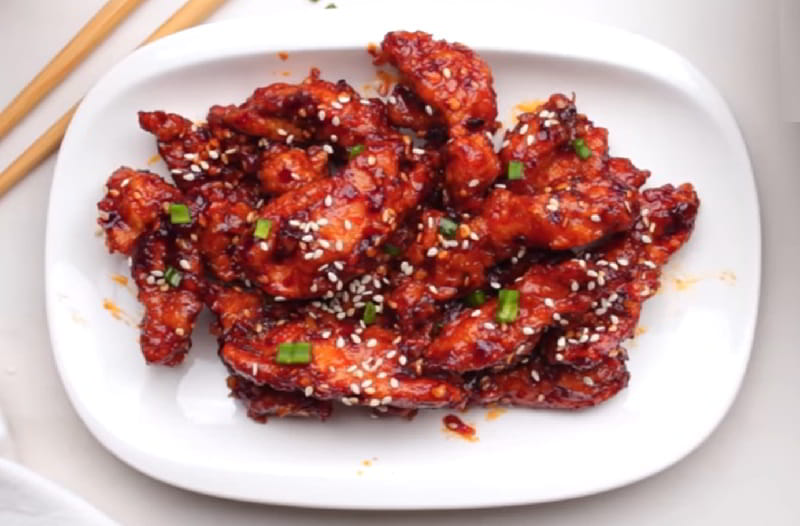
Chilli chicken is a popular Indo-Chinese dish renowned for its bold flavors and spicy kick. Tender pieces of chicken are marinated in a flavorful blend of spices, garlic, ginger, and soy sauce before being deep-fried until crispy. The fried chicken is then stir-fried with a vibrant sauce made from tomatoes, onions, bell peppers, green chilies, and a mixture of sauces like soy sauce, vinegar, and chili sauce. The result is a tantalizing fusion of savory, tangy, and spicy flavors, with the chicken coated in a glossy, aromatic sauce. Chilli chicken is often served as a starter or main course in Indo-Chinese cuisine.
Chinese Chicken Salad

Chinese chicken salad is a popular dish in certain regions of the United States, featuring chopped chicken and a variety of Chinese-inspired ingredients. While recipes vary, typical components include lettuce, cabbage, carrots, cucumbers (both pickled and fresh), chicken (often breast meat), deep-fried wonton skins or rice vermicelli, and nuts like sliced almonds, cashews, or peanuts. A simple vinaigrette dressing made with vegetable oil, sesame oil, and rice vinegar (or citrus juice) is commonly used. Additional seasonings such as dry hot mustard, sesame seeds, coriander, and raw or pickled ginger may be included. In restaurants, Chinese chicken salad is often served as a hearty main-course salad, similar to other classic salads like Caesar, Chef, and Cobb.
Pie Tee
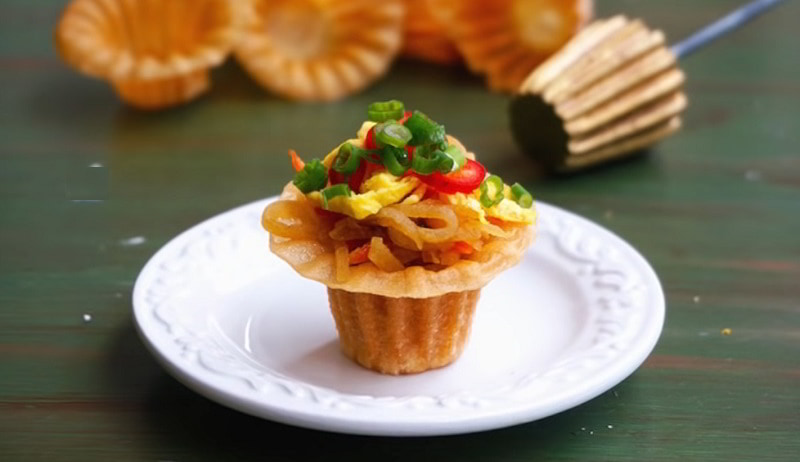
Pie tee is a delightful Chinese fusion dish that originates from the Peranakan culture in Malaysia and Singapore. It is a unique and flavorful appetizer that combines the best of Chinese and Malay culinary traditions. The dish consists of small, crispy pastry cups known as "pie tee" that are filled with a medley of finely chopped vegetables, seafood, and meat. The pie tee cups are made from a thin, crispy shell that is shaped like a cone. They are typically filled with a mixture of julienned vegetables like carrots, turnips, and bamboo shoots, along with prawns, chicken, or crab meat. The filling is often stir-fried with aromatic spices like garlic, ginger, and chili, and seasoned with soy sauce and oyster sauce for a savory kick.
Chow Mein Sandwich
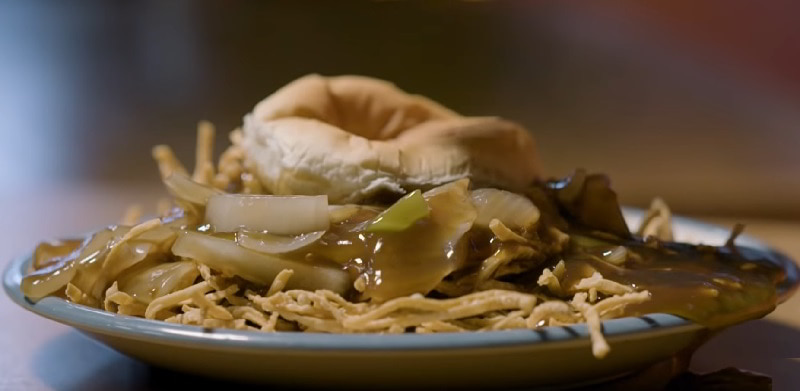
The chow mein sandwich is a unique creation found on Chinese-American restaurant menus in southeastern Massachusetts and parts of nearby Rhode Island. It features a filling of chow mein mixture, usually with a brown gravy base, sandwiched between halves of a hamburger-style bun. This innovative sandwich was devised to offer an affordable meal option in an economically challenged area populated by recent immigrants from Europe and Canada. By presenting it in a format familiar to the local community, the chow mein sandwich provided a comforting and accessible dining choice that quickly became a beloved culinary tradition in the region.
Tenshindon
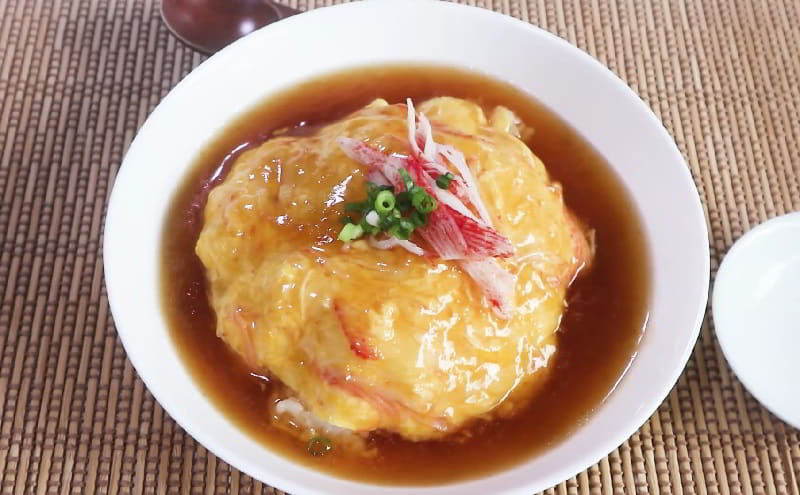
Tenshindon is a Japanese dish originating from China, comprising a crispy omelette served over a bed of rice and drizzled with a savory sauce. The omelette is typically made from eggs mixed with cornstarch or potato starch, creating a light and airy texture. Inside the omelette, there is a flavorful filling consisting of stir-fried vegetables, seafood such as shrimp or squid, and sometimes chicken or pork. The dish is then garnished with green onions or beni shoga (pickled ginger strips) for added flavor and color.
Chicken Balls
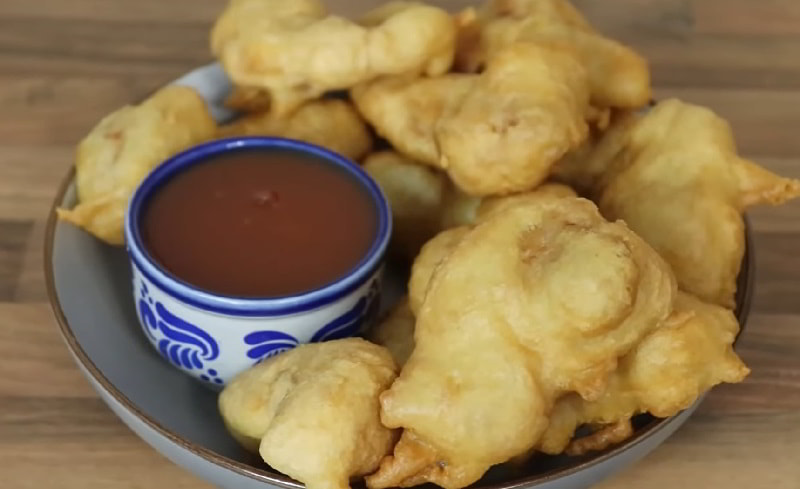
Chicken balls are a popular dish in Canadian, Irish, American, and British Chinese cuisine, commonly found in Chinese take-out menus. They feature bite-sized pieces of chicken breast meat coated in a crunchy batter and deep-fried until golden brown. Typically served alongside dipping sauces such as curry sauce, sweet and sour sauce, or plum sauce, chicken balls offer a flavorful and satisfying meal option. However, it's important to note that they are not widely recognized in traditional Chinese cuisine, with variations in recipes and names depending on the region and cultural adaptation.
Bamischijf

Bamischijf, a distinctive Dutch snack, is a culinary marvel crafted from a slice of bami—Indonesian fried noodles—transformed through breading and deep-frying. This delightful creation represents the Dutch adaptation of the Chinese-Indonesian noodle dish bakmi goreng, showcasing the fusion of international flavors in Dutch cuisine. A kindred variation, the nasischijf, mirrors this process using nasi goreng—fried rice.
The heart of the bamischijf lies in its filling, prepared with a foundation of cooked bami enriched with a medley of vegetables, meats, and Indonesian spices and sauces. The noodles are densely packed, creating a dough-like consistency within the filling. This flavorful mass is skillfully rolled into a sausage-like shape, from which delectable slices are cut. These slices undergo a transformative journey as they are coated in breadcrumbs and crisped to perfection through deep-frying
Lobster Sauce
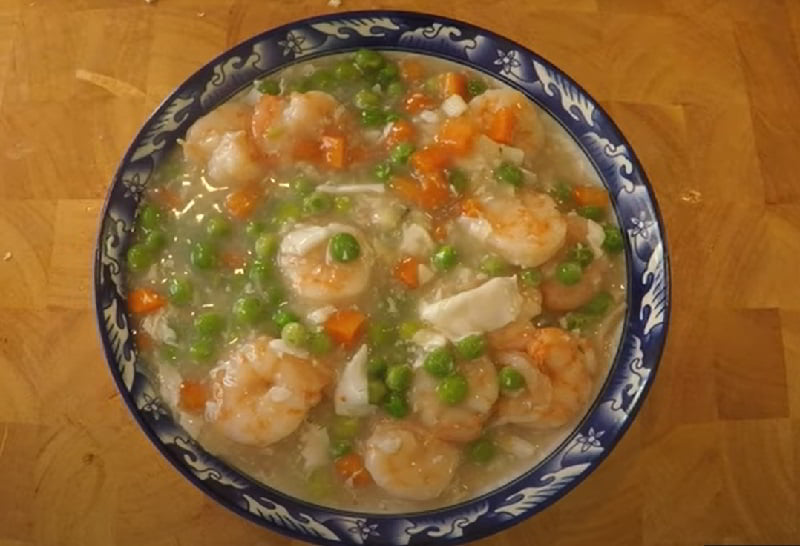
Lobster sauce is a staple in American-Chinese and Canadian-Chinese cuisine, with occasional appearances in Polynesian-influenced Chinese dishes. It's classified as a "white sauce" in Chinese cooking, characterized by a mild flavor profile and based on meat stock rather than soy sauce. Despite its name, lobster sauce doesn't contain any lobster and its preparation can vary between regions and restaurants. Common ingredients include chicken broth, garlic, ginger, green onions, fermented black beans, and eggs, thickened with starch. Some recipes incorporate pork mince and soy sauce. The sauce's color ranges from pale white to brown or yellow, depending on soy sauce quantity and egg incorporation method.
Bihun Goreng
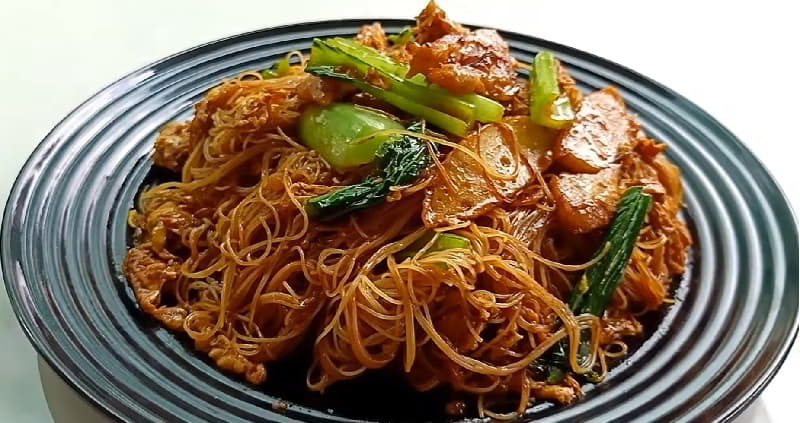
Bihun goreng is a flavorful and satisfying stir-fried noodle dish that showcases the harmonious blend of Chinese, Malay, and Indonesian culinary influences. The base of bihun goreng consists of rice vermicelli noodles, which are stir-fried with an array of colorful and aromatic ingredients. Common additions include shrimp, chicken, bean sprouts, carrots, bell peppers, and cabbage. These ingredients are tossed together in a wok, resulting in a medley of textures and flavors. The sauce used in bihun goreng is a key component, typically a combination of soy sauce, oyster sauce, and chili sauce. This combination adds a savory, umami-rich taste with a hint of spiciness. The dish is often garnished with fried shallots, green onions, and lime wedges for additional depth and freshness.
Cabidela
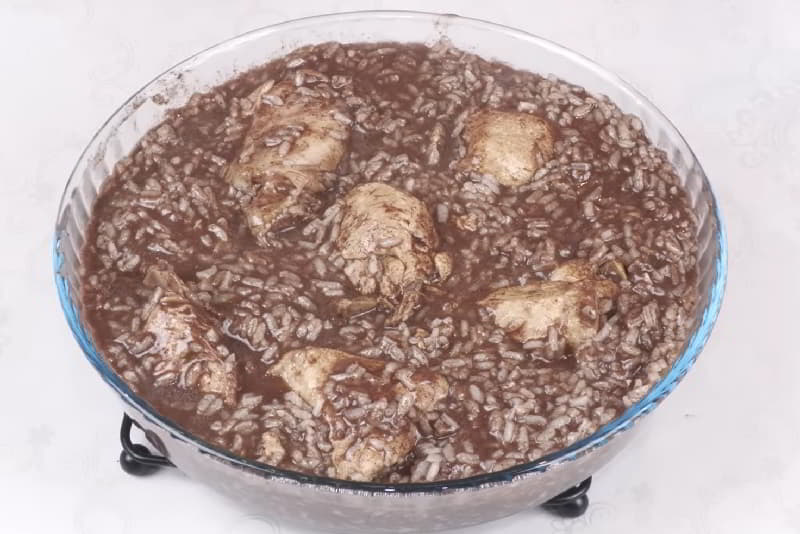
Cabidela is a unique and flavorful dish that combines traditional Chinese cooking techniques with the rich and bold flavors of Portuguese cuisine. This dish originates from the Macau region, where Chinese and Portuguese culinary influences blend seamlessly. The main ingredient in Cabidela is chicken, which is marinated and then stir-fried with an assortment of aromatic spices such as garlic, ginger, and chili peppers. The dish is then simmered in a sauce made from a combination of soy sauce, vinegar, and Portuguese red wine, giving it a tangy and slightly sweet flavor profile. The use of wine in the sauce adds a depth of flavor and richness to the dish. What sets Cabidela apart is the addition of blood rice, which is a traditional Portuguese ingredient. The blood rice is cooked separately and then mixed with the chicken and sauce, creating a visually striking and delicious dish. The rice absorbs the flavors of the sauce, resulting in a unique and savory taste experience.
Bourbon Chicken
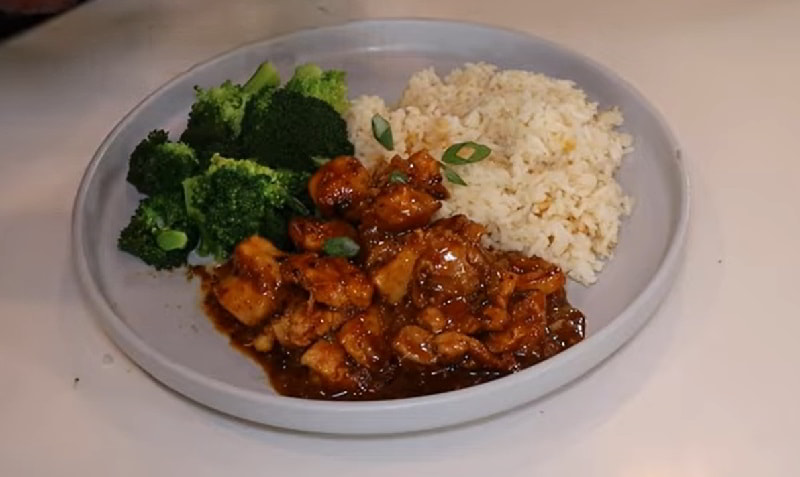
Bourbon chicken derives its name from Bourbon Street in New Orleans, Louisiana, and incorporates bourbon whiskey as a key ingredient. This flavorful dish is frequently served in North American restaurants specializing in Cajun or American Chinese cuisine. The recipe typically features a marinade made with soy sauce, brown sugar, ginger, and bourbon whiskey, infusing the chicken with rich and savory flavors. Additionally, honey may be included in the marinade for added sweetness and depth.
Hokkien Fried Rice
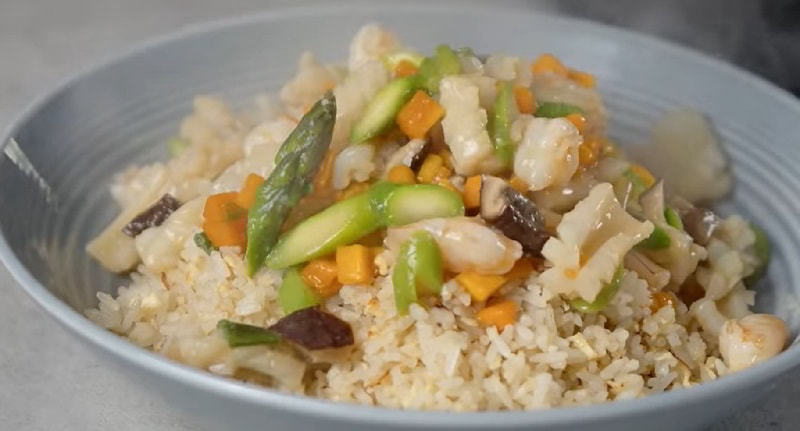
Hokkien fried rice is a well-liked Chinese rice dish that originated in the Hokkien region of China. It is a delicious stir-fried rice dish commonly found in Chinese restaurants worldwide. The dish consists of cooked rice stir-fried with a variety of ingredients such as diced vegetables (carrots, peas, and corn) and protein choices like shrimp, chicken, or pork. The secret to a great Hokkien fried rice lies in using high heat and quick cooking techniques, resulting in a dish bursting with flavors and textures. To enhance the taste, the rice is typically seasoned with soy sauce, oyster sauce, and sometimes a hint of sesame oil. This combination of sauces lends the dish a savory and slightly sweet flavor profile. It is often garnished with chopped spring onions and served with pickled vegetables or a fried egg on the side to complement the dish.
Pancit Molo
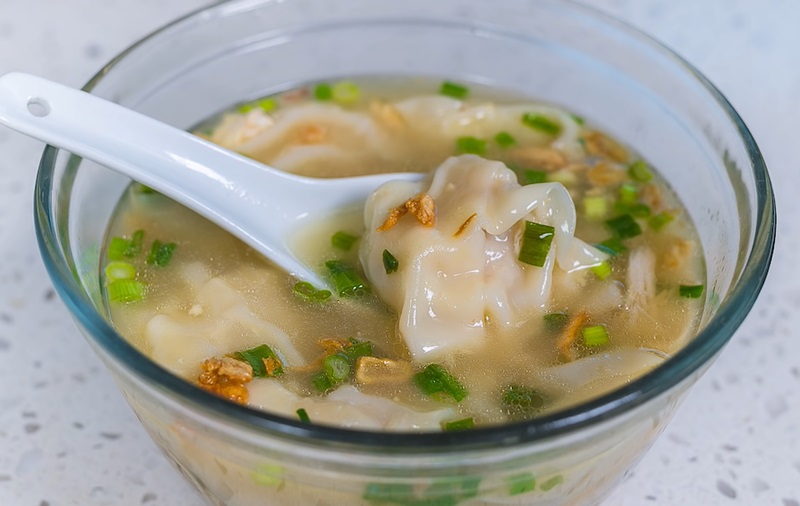
Pancit Molo is a delectable fusion dish that combines Chinese and Filipino culinary influences. Originating from the Molo district in Iloilo, Philippines, this dish showcases the marriage of Chinese dumpling-making techniques with Filipino flavors. The dish primarily consists of dumplings made from ground pork or chicken, minced onions, garlic, and a medley of herbs and spices. These dumplings are carefully wrapped in delicate wonton wrappers and then boiled until they become tender and flavorful. The dumplings are then served in a piping hot broth, which is typically made from chicken or pork, enriched with aromatics like garlic and onions. Pancit Molo is typically garnished with freshly chopped green onions and crispy garlic bits, giving it an added depth of flavor and texture. It is often enjoyed as a hearty soup or as a main course, especially during special occasions and celebrations. T
Swikee
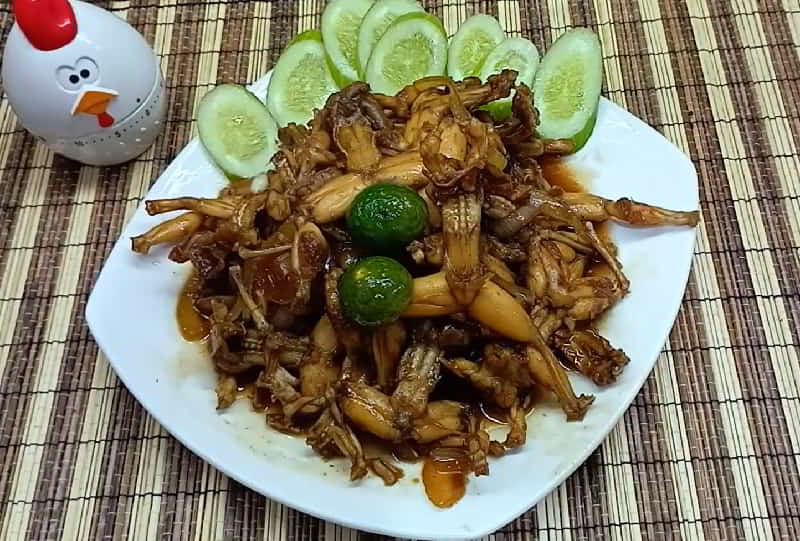
Swikee, a Chinese Indonesian delicacy, showcases the versatility of frog legs prepared in various enticing ways—be it as a hearty soup, deep-fried for a crispy texture, or stir-fried to perfection. This dish, originally rooted in Chinese culinary traditions, has seamlessly integrated into the vibrant tapestry of Indonesian gastronomy.
The name "Swikee" itself carries a linguistic charm, derived from the Hokkian dialect, where "sui" means water and "ke" translates to chicken, forming a poetic euphemism for frogs as "water chicken." Notably enjoyed in Indonesia, Swikee has gained popularity and is often linked to specific regions like Purwodadi in Central Java and Jatiwangi town in Majalengka, West Java.
The star of this dish is the frog legs, predominantly sourced from "green frogs." These succulent legs are masterfully seasoned with ginger, salt, garlic, and fermented soy paste (tauco), enhancing the flavors and creating a delectable profile. The finishing touches may include fried garlic and chopped celery, elevating the dish further. Swikee is typically served alongside plain steamed rice, inviting a culinary experience that beautifully blends Chinese roots with Indonesian culinary innovation.
Manapua
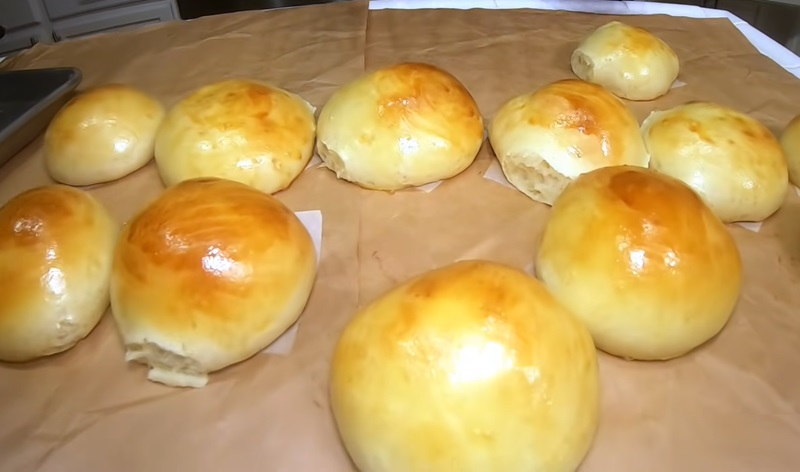
Manapua is a Chinese fusion dish that has gained popularity in Hawaii. This delectable treat consists of a soft and fluffy steamed bun, similar to a Chinese bao, filled with various savory fillings. The name "manapua" is derived from the Hawaiian words "mana" meaning delicious and "pua" meaning pork. Traditionally, the filling of manapua consists of char siu, a Cantonese style barbecued pork, which is marinated in a sweet and tangy sauce. However, over time, the fillings have diversified to include other options like chicken, beef, shrimp, and even vegetarian options. The bun itself is made from a simple dough mixture of flour, yeast, sugar, and water, which is then steamed to perfection. The result is a soft, pillowy texture that complements the flavorful filling.
Fish Head Curry
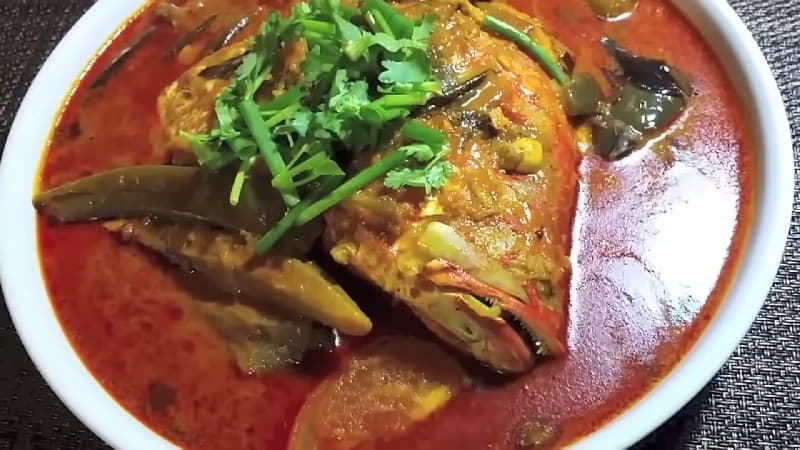
Fish head curry is a delightful Chinese fusion dish that combines the flavors of Chinese and Indian cuisines. This dish is known for its bold and spicy taste, making it a favorite among food enthusiasts. The star ingredient of this dish is the fish head, which is cooked to perfection in a rich and aromatic curry sauce. The fish head is marinated with a blend of Chinese spices, such as ginger, garlic, and five-spice powder, before being simmered in a fragrant curry made with Indian spices, like turmeric, cumin, and coriander. The curry sauce is thick and creamy, with a perfect balance of tanginess and heat. It is typically made with coconut milk, giving it a silky texture and a subtle sweetness that complements the spices. The fish head absorbs all the flavors of the curry, resulting in tender and succulent meat that melts in your mouth.
Mango Pudding

Mango pudding is a beloved dessert with a rich history in Hong Kong's culinary scene, blending British and Chinese influences harmoniously. Crafted with precision, the fresh version of mango pudding combines ripe mangoes, evaporated milk, agar or gelatin, and sugar to achieve a creamy and luxurious texture. It is often adorned with colorful fruits like berries, strawberries, mango, or kiwifruit for an extra burst of flavor. Served chilled, mango pudding provides a cool and delightful indulgence.
In some Chinese eateries, mango pudding is molded into a fish shape, symbolizing good fortune in Chinese culture. While commercially produced mango pudding retains its delightful essence, it may use mango essence, gelatin, or agar instead of fresh mangoes. This versatile dessert beautifully encapsulates the blend of flavors and cultural influences that have made it a global favorite in the culinary world.
Ginger Milk Curd
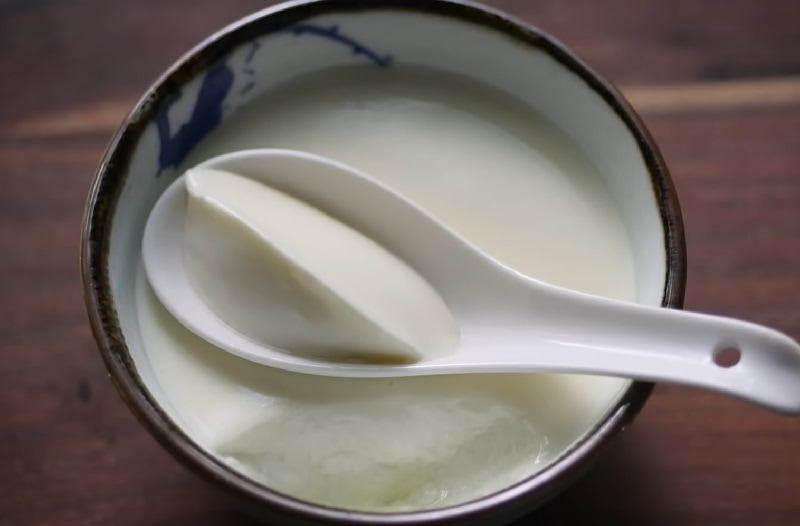
Ginger milk curd, also known as ginger-juice milk curd, ginger milk, or ginger milk pudding, is a comforting Chinese dessert originating from Shawan Ancient Town in the Panyu District of Guangzhou, Guangdong Province, in southern China. This delightful treat is made using milk, ginger, and sugar, with the traditional recipe featuring water buffalo milk. Known for its velvety smooth texture, the preparation of ginger milk curd involves gently heating milk and adding ginger juice, which triggers a coagulation process resulting in a silky pudding. The inclusion of water buffalo milk enhances the dish's distinct flavor, providing richness and complexity.
Beef and Broccoli
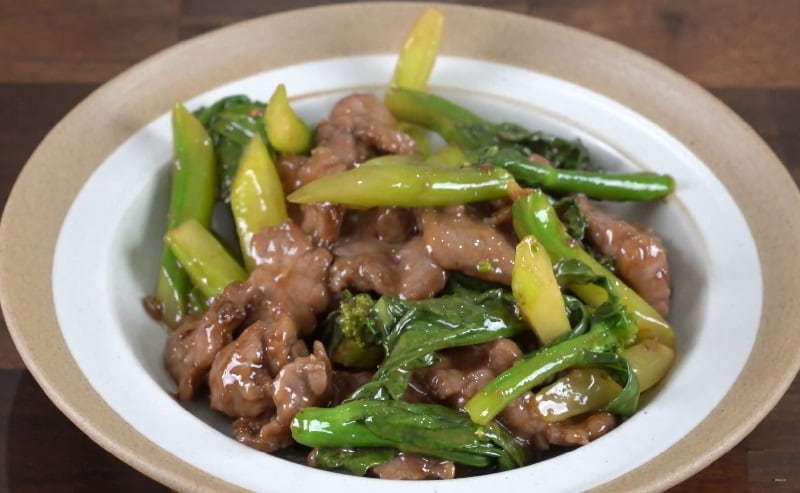
Beef and broccoli is a popular dish in American Chinese cuisine. It involves stir-frying thinly sliced steak and broccoli florets in a savory sauce made with oyster or soy sauce, along with aromatic ingredients like garlic and ginger. To balance flavors, sugar or honey may be added to the sauce. Corn starch is often utilized to tenderize the beef and create a thicker sauce consistency. This flavorful and comforting dish showcases a perfect harmony of tender beef, crisp broccoli, and a savory sauce, making it a beloved choice on Chinese restaurant menus.
Snow Skin Mooncake

Snow skin mooncakes are a delightful variation of the traditional Chinese mooncake, favored for their soft and chewy texture. Unlike the baked counterparts, snow skin mooncakes feature a delicate, translucent outer layer made from glutinous rice flour, giving them a snow-like appearance and a pleasantly light taste. These mooncakes are often filled with sweet and creamy fillings such as lotus seed paste, red bean paste, or flavored custards. Varieties may include fruity or floral flavors for a refreshing twist. Snow skin mooncakes are enjoyed during the Mid-Autumn Festival, offering a modern and elegant alternative to the classic baked mooncakes.
Sha Cha Beef

Sha cha beef is a popular Chinese fusion dish that combines the rich flavors of traditional Chinese cuisine with the boldness of Western influences. This delectable dish features tender slices of beef stir-fried with a unique and savory sha cha sauce. The sha cha sauce, also known as Chinese BBQ sauce, is a blend of various ingredients including soybean oil, garlic, shallots, chili peppers, and shrimp paste. These flavors come together to create a complex and aromatic sauce that adds a distinct and satisfying taste to the beef. To prepare this dish, the beef is first marinated in a mixture of soy sauce, ginger, and garlic, allowing the flavors to penetrate the meat. It is then stir-fried in a hot wok along with the sha cha sauce, resulting in a tender and flavorful beef dish. The sha cha beef dish is often served with steamed rice or noodles, allowing the sauce to be soaked up and enjoyed. The combination of the tender beef and the bold flavors of the sha cha sauce creates a mouthwatering fusion dish that is sure to please any palate.
Pork Chop Bun

Pork chop bun is a beloved Chinese street food that originated in Macau and has now become popular throughout China. This delectable dish features a tender and succulent pork chop that is marinated in a delightful blend of soy sauce, garlic, and spices before being perfectly fried. The pork chop is then placed on a soft and fluffy bun, creating a delightful medley of textures. To enhance the flavors, the pork chop bun is often accompanied by a variety of condiments like lettuce, tomato, and mayonnaise, which provide freshness and creaminess. The bun itself has a subtle sweetness that beautifully complements the savory and well-seasoned pork chop.
Bánh bao bánh vạc
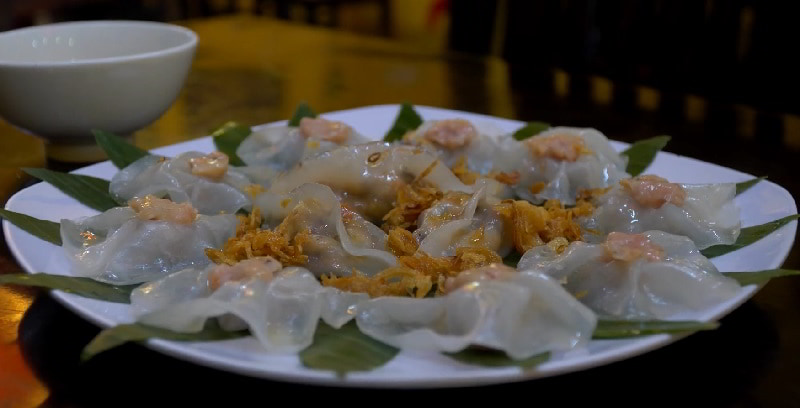
Cola chicken
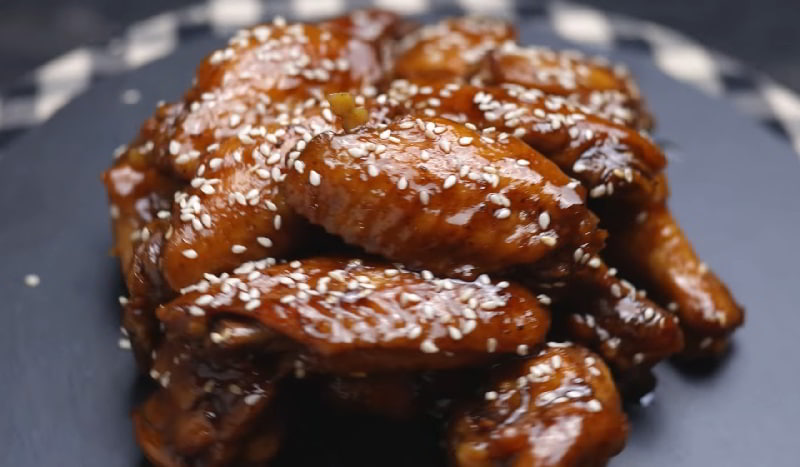
Chinese bhel
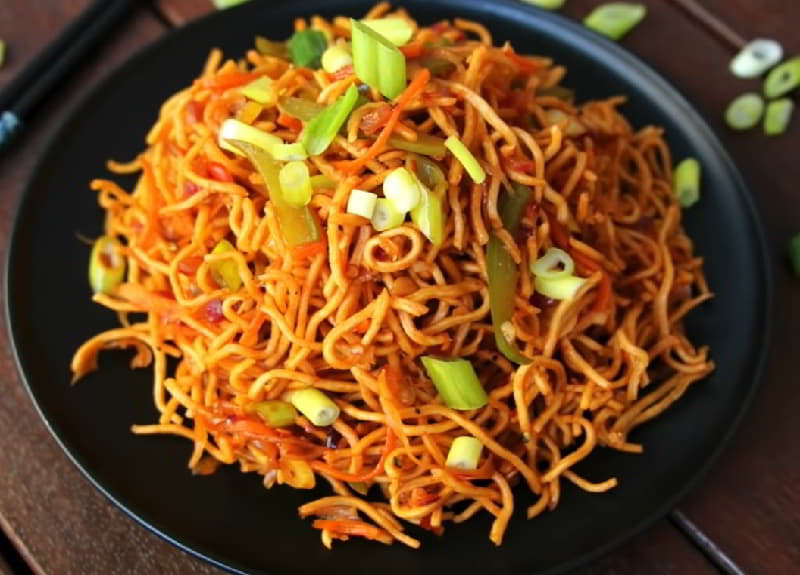
Mein gon
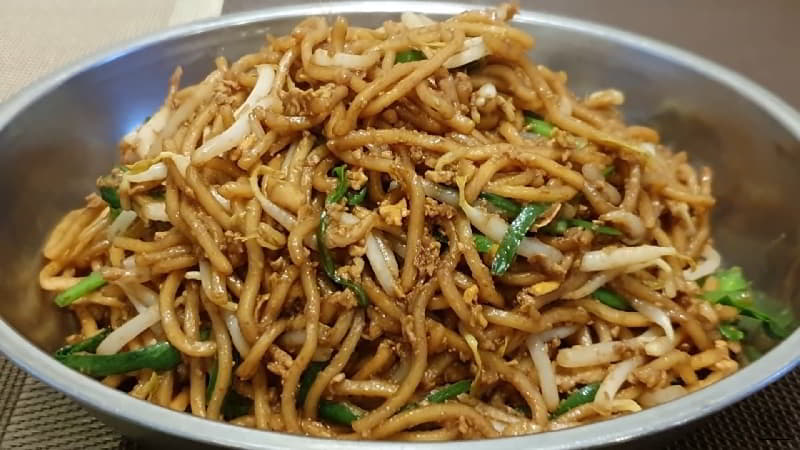
Portuguese sauce
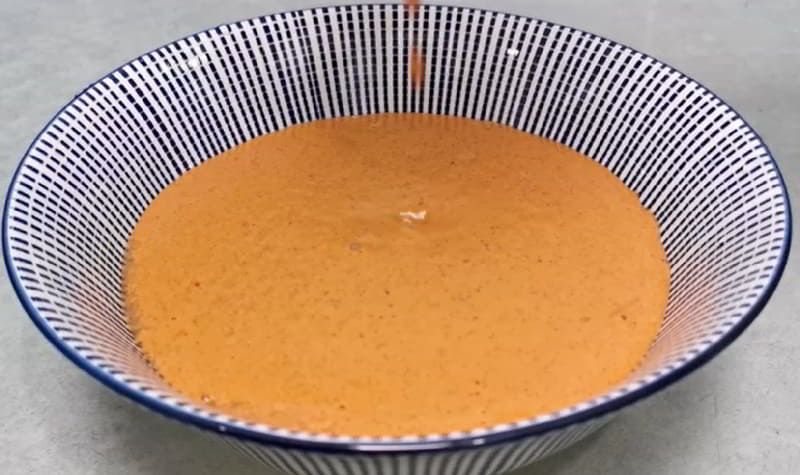
Maki mi
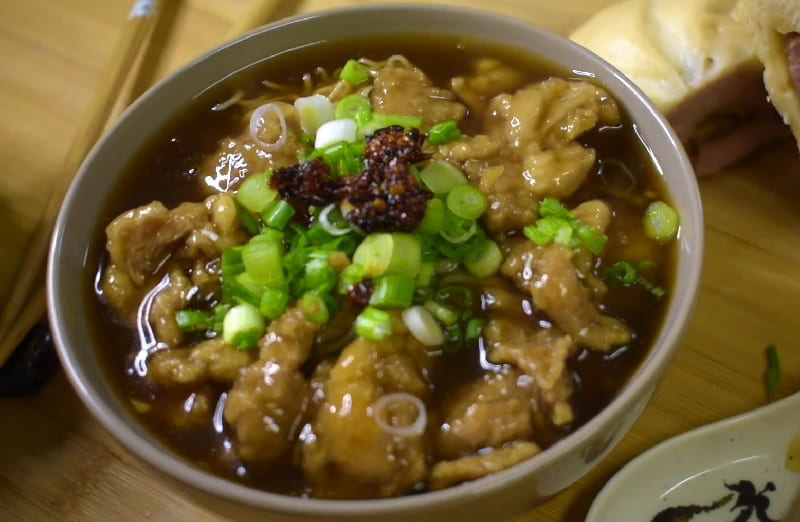
Galinha à portuguesa
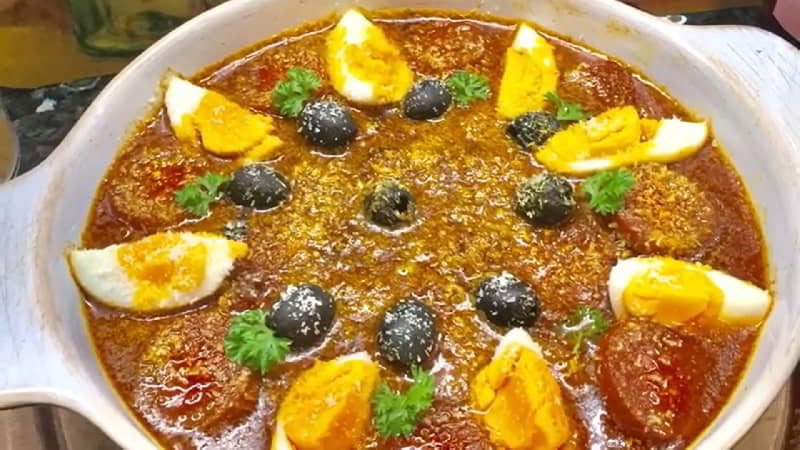
Babi kecap
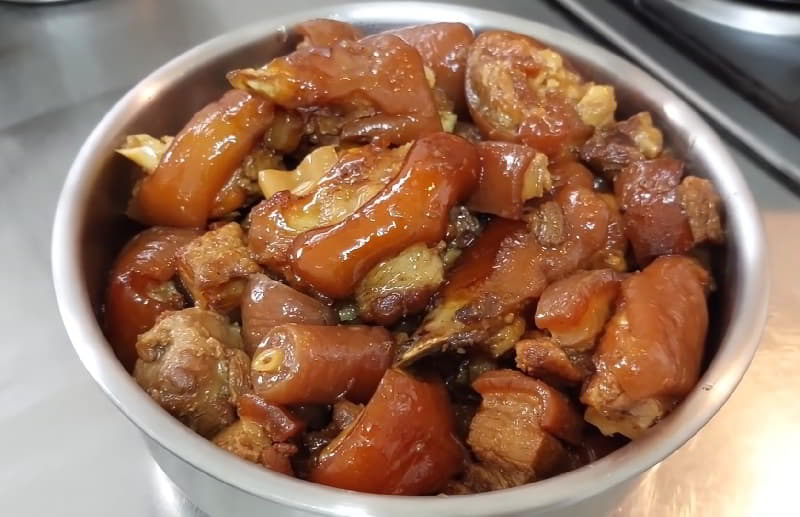
Corn crab soup
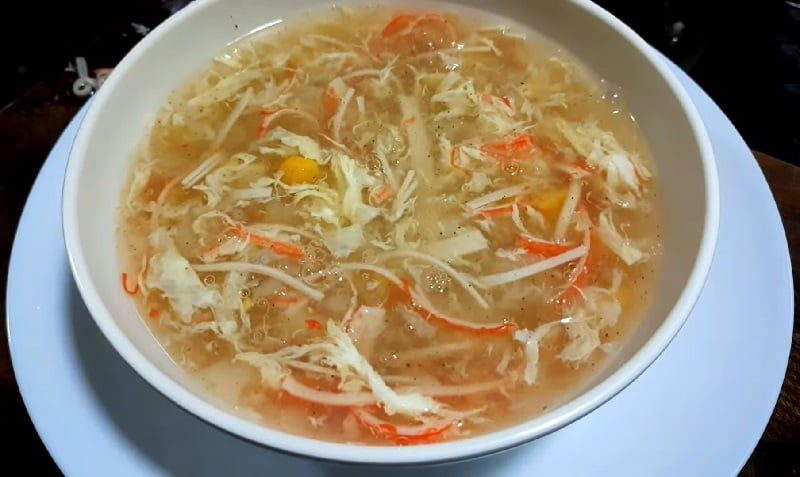
Sapo tahu
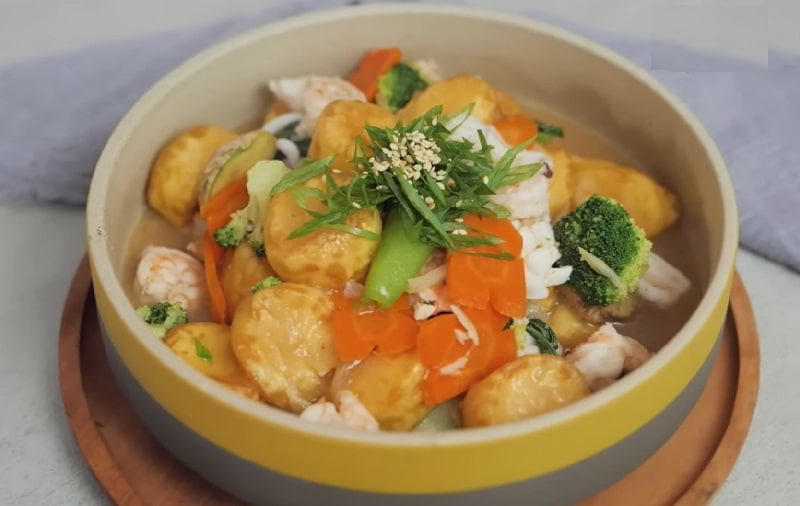
Chicken and broccoli
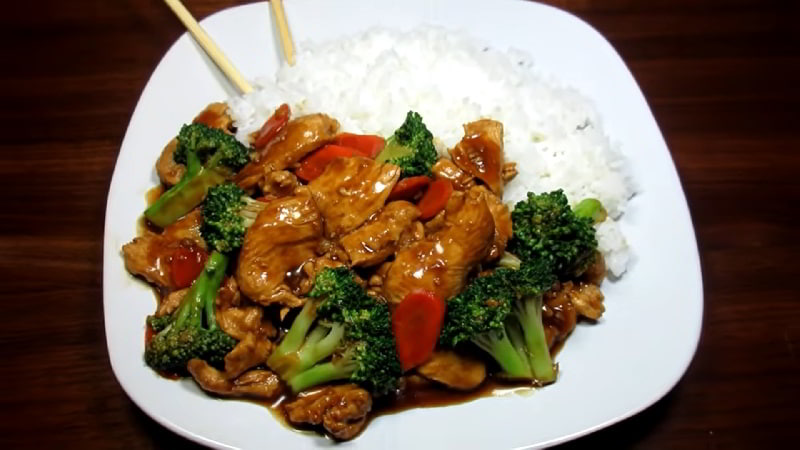
Tahu sumedang
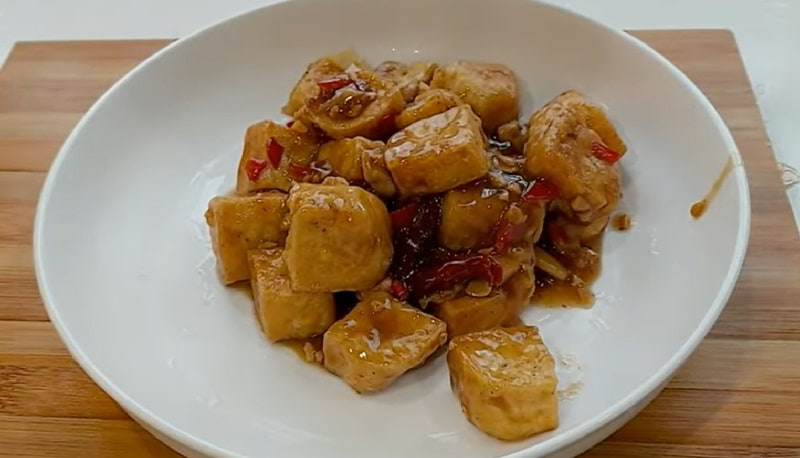
Almond chicken
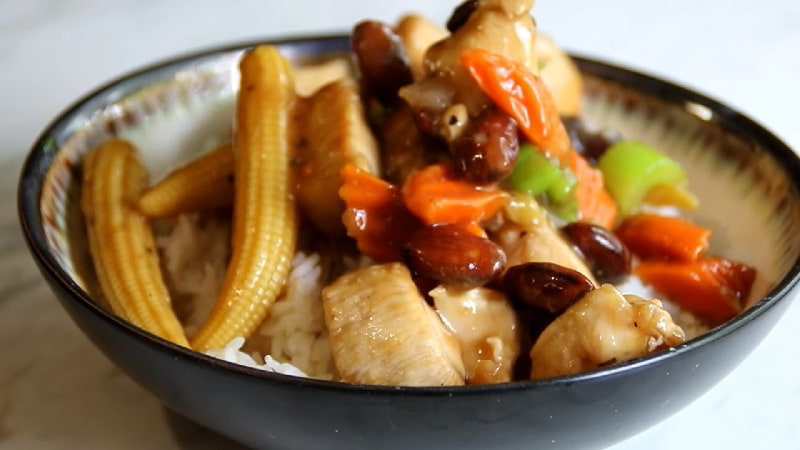
Tallarín saltado
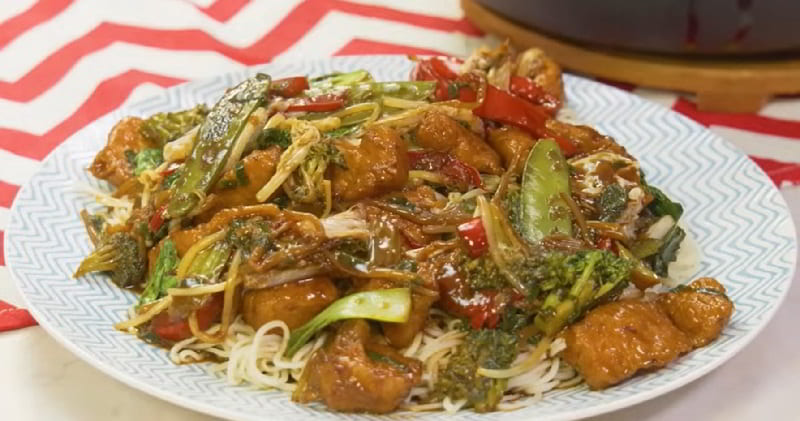
Ifumi
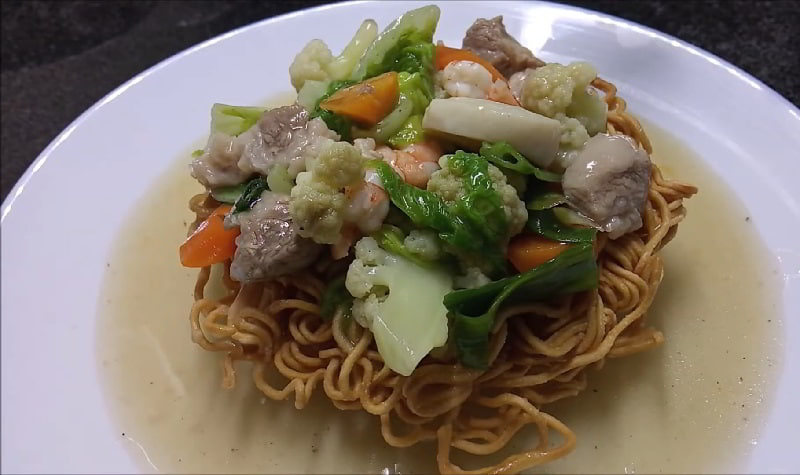
Minchee
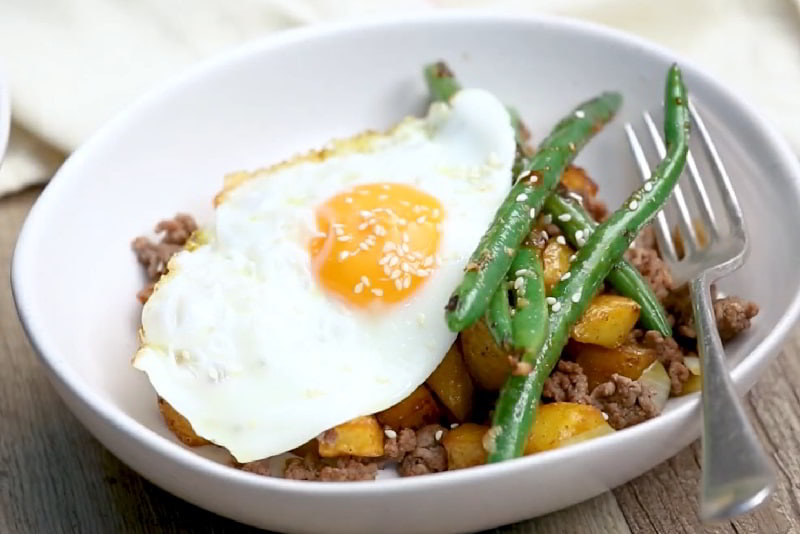
Bakpau
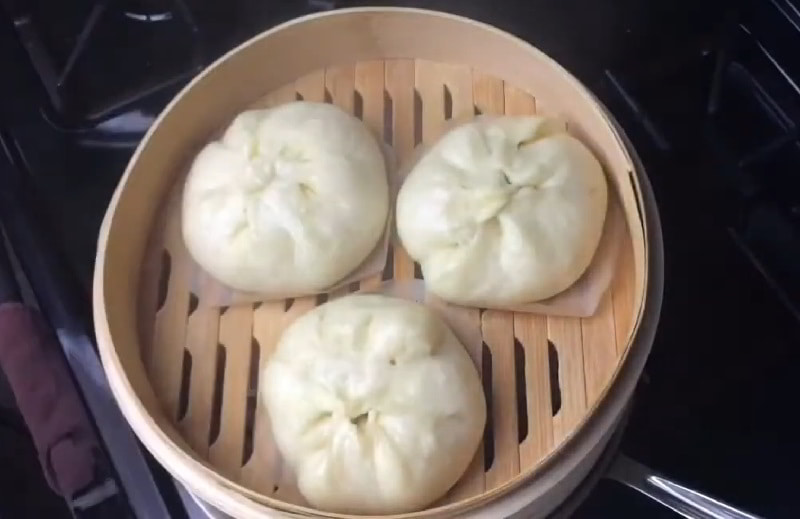
Mie bakso
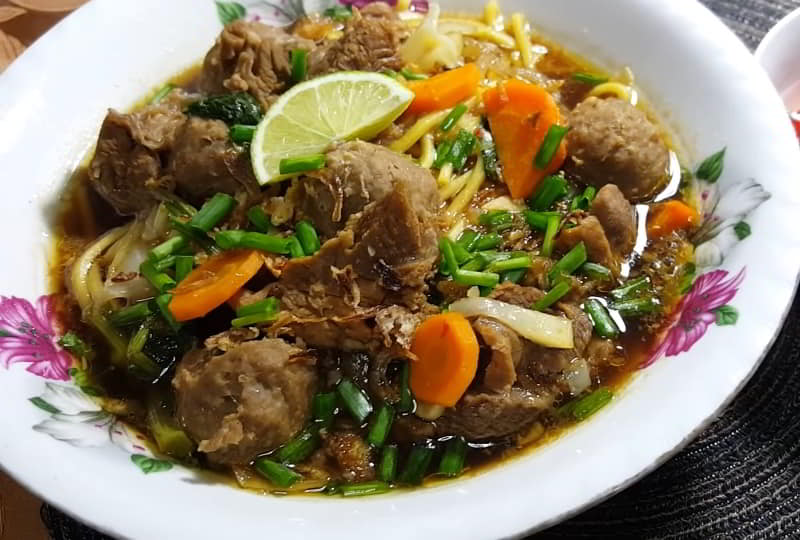
Nasi tim
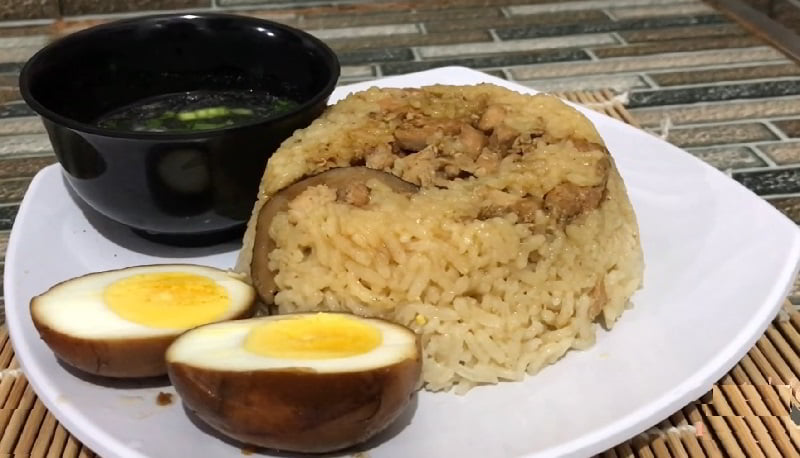
Lontong cap go meh
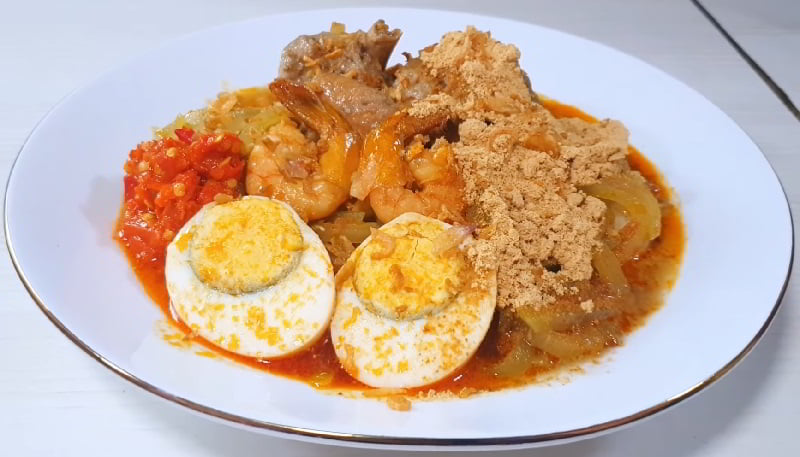
Beef kway teow
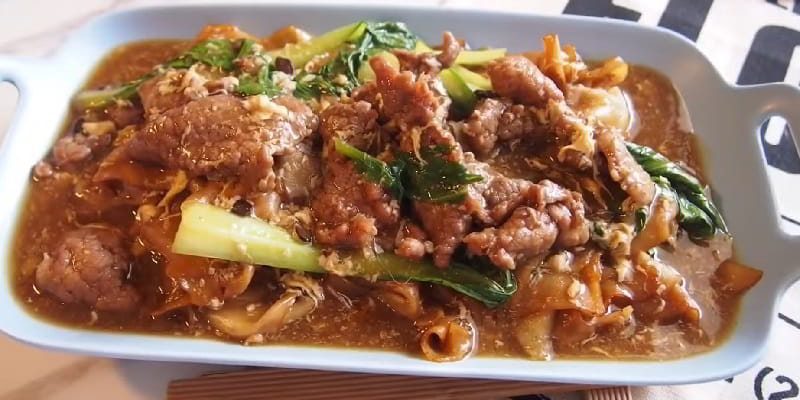
Babi hong
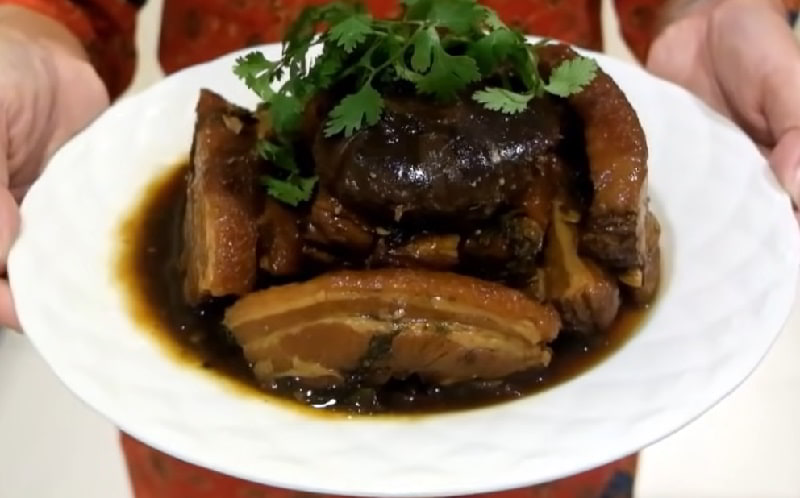
Kwetiau ayam
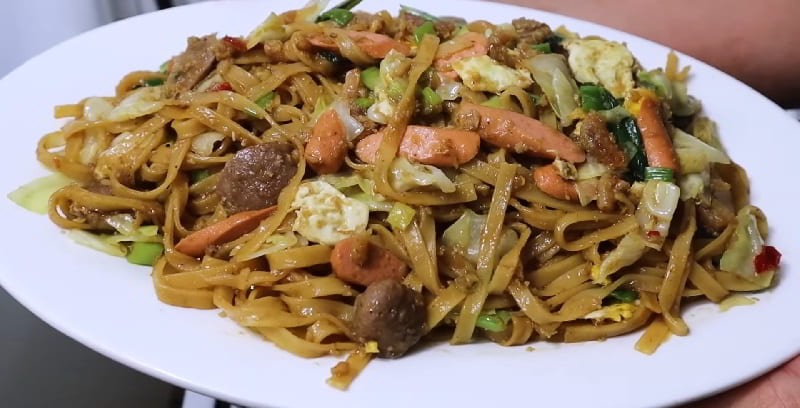
Sekba
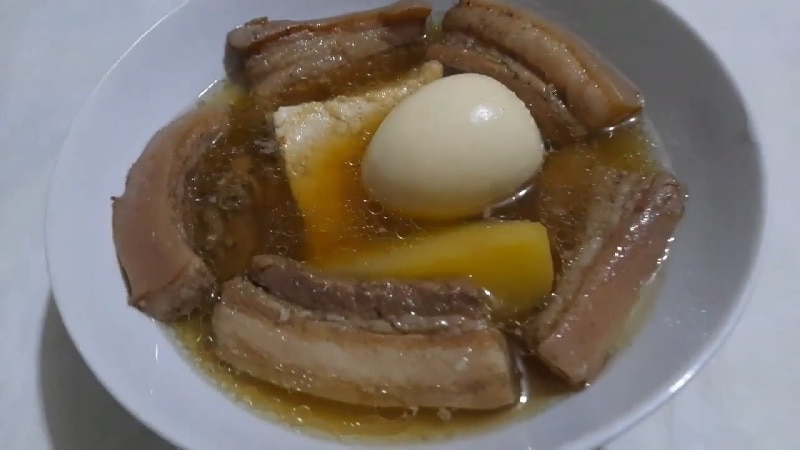
Galinha à africana
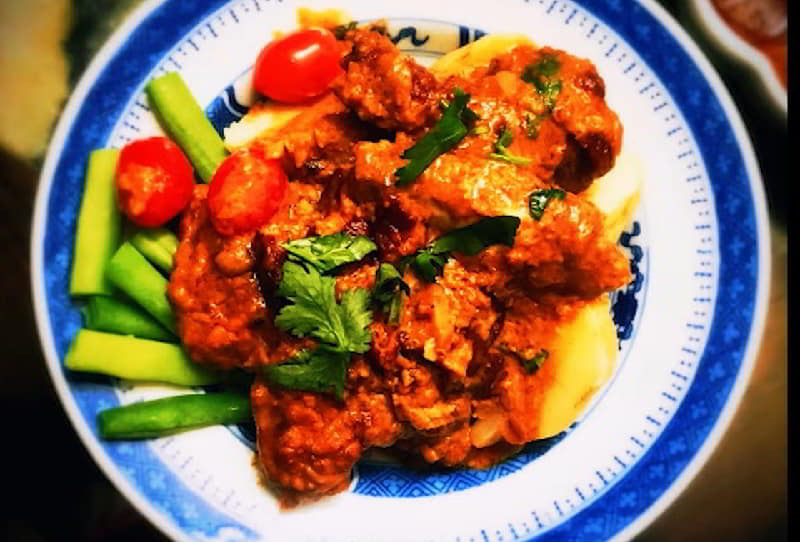
Honey walnut shrimp
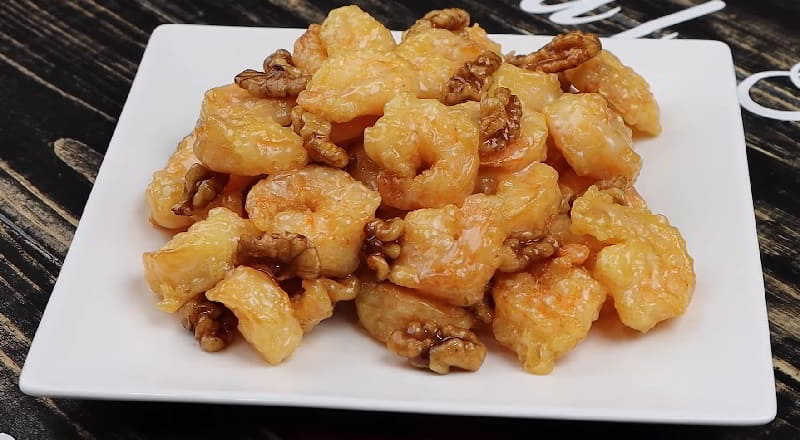
Pancit choca
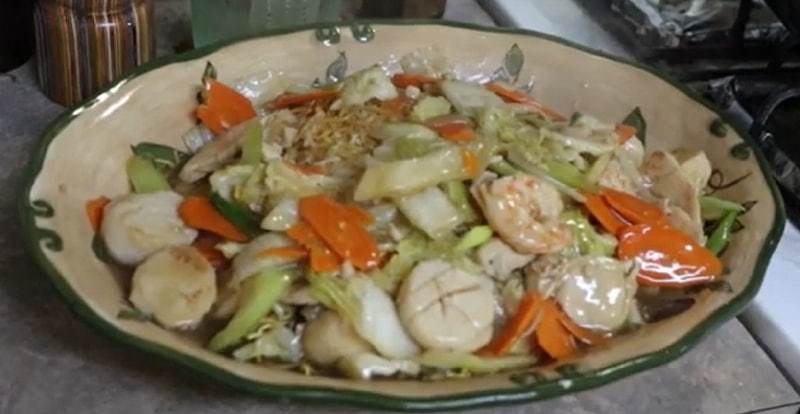
Nankin Cafe

Crab in oyster sauce
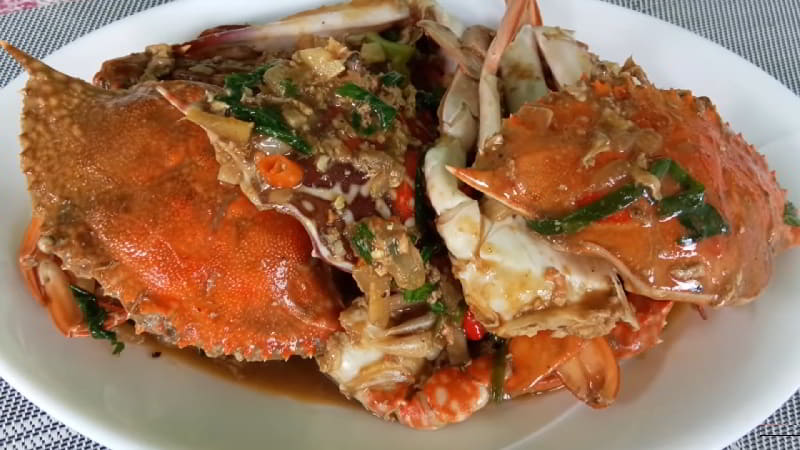
Chili shrimp
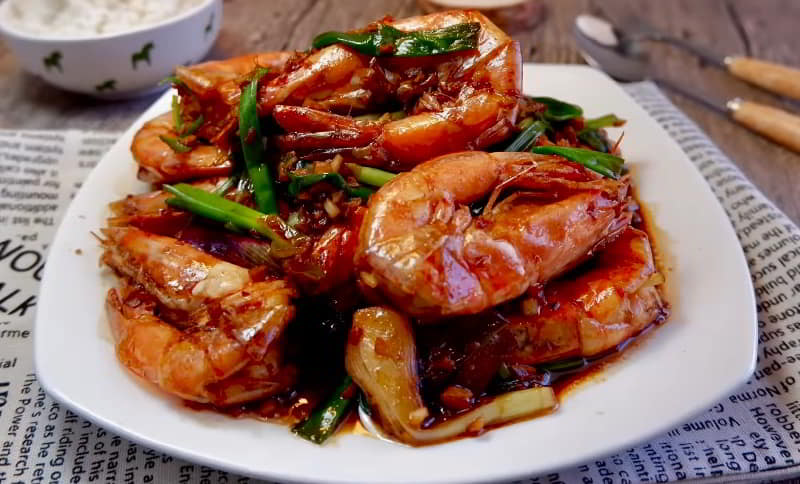
Jungguk-naengmyeon
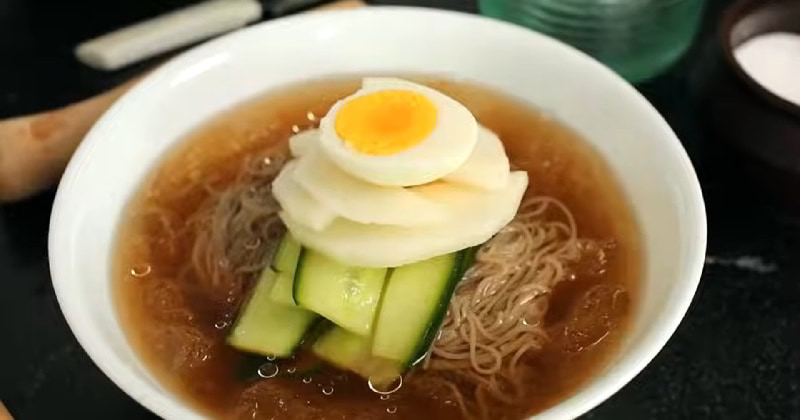
Three Fried Stuffed Treasures
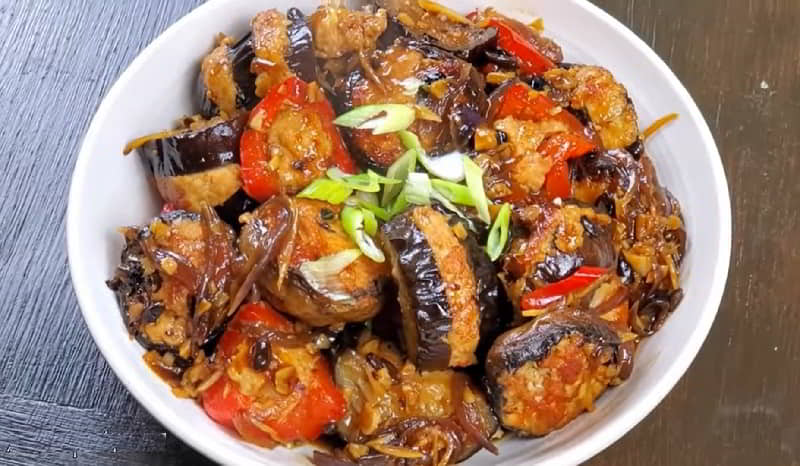
Mun tahu
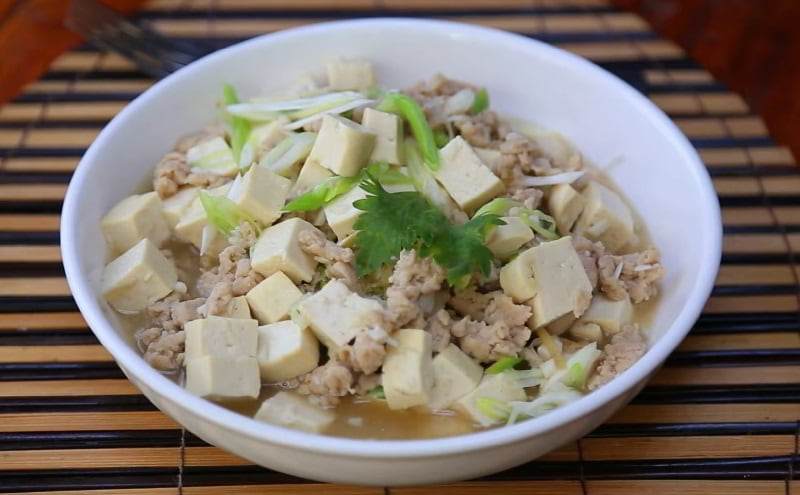
Pancit buko
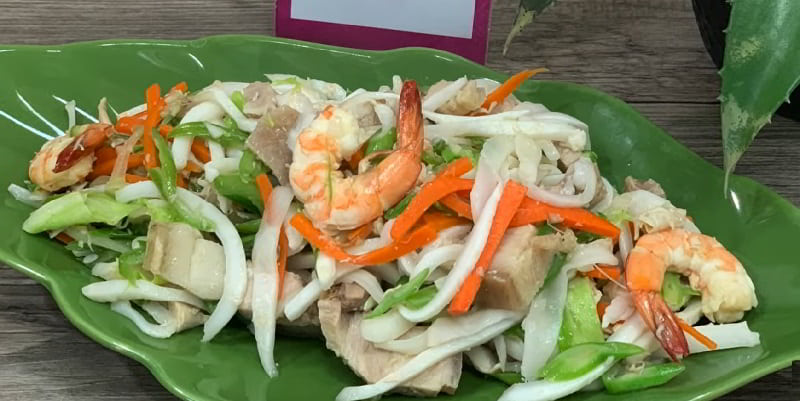
Jipang (food)
-1709126066.jpg)
Mie kering
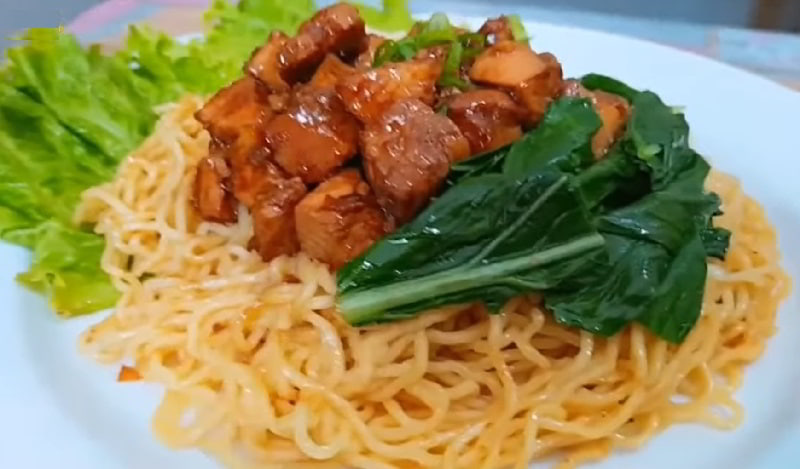
Pancit estacion
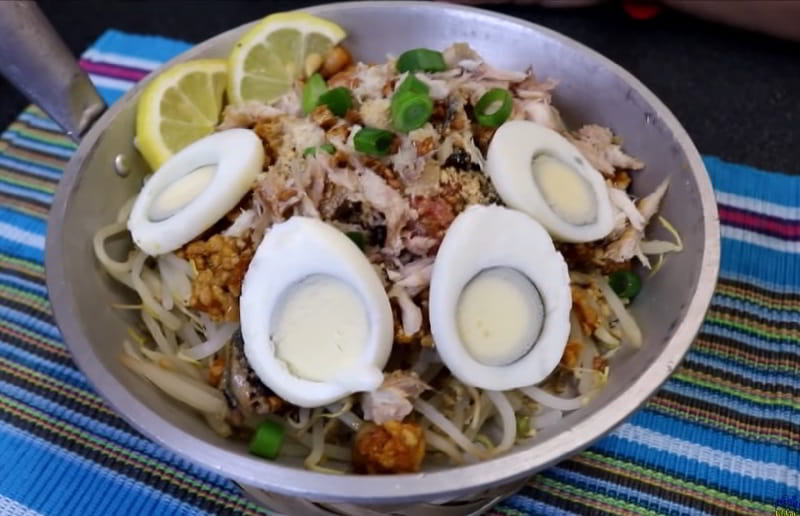
Tacho (food)
-1709118709.jpg)
Ulmyeon
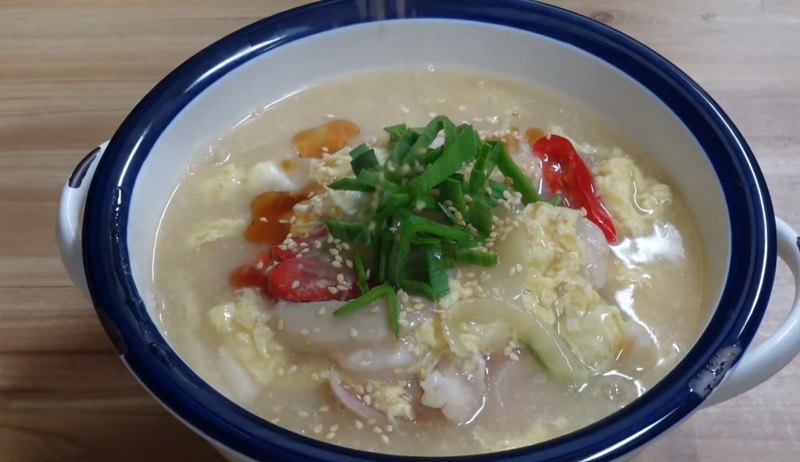
Blue cheese wontons
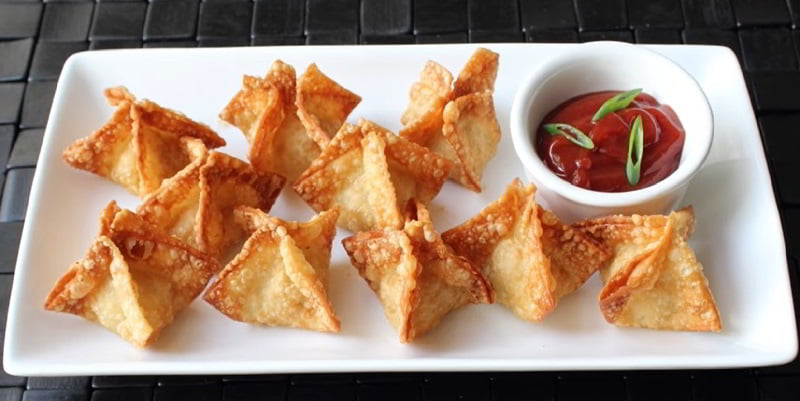
Don Chow Tacos

Sopa de lacassá

Cha Gordo

The Fortune Cookie Chronicles

Kari kapitan
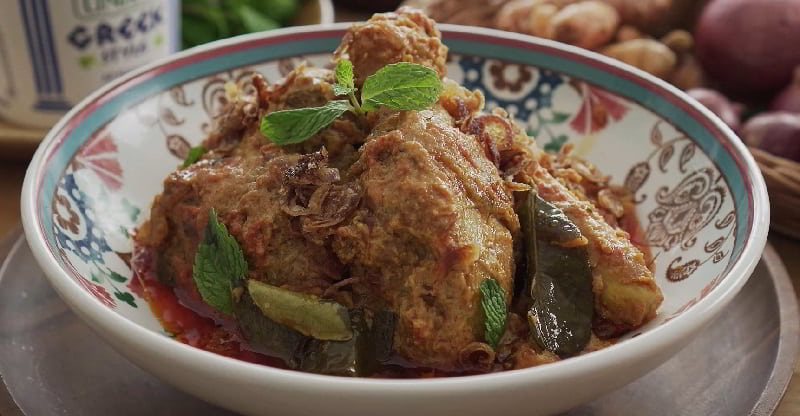
Arroz gordo
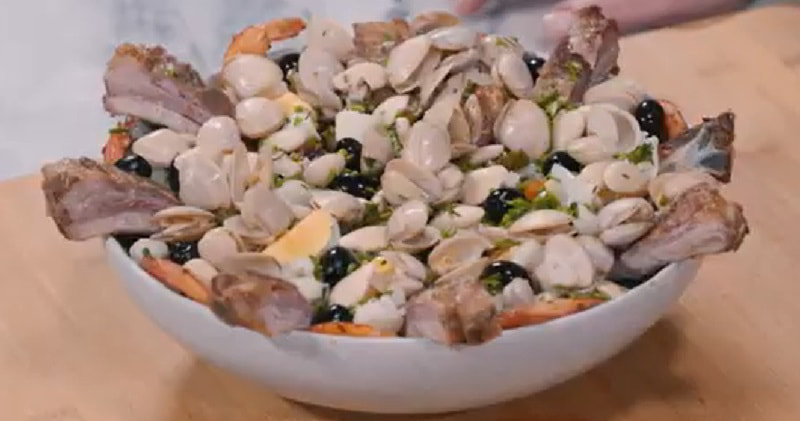
Henry Low (chef)

Jardin Tiki

Baogel

Balichão
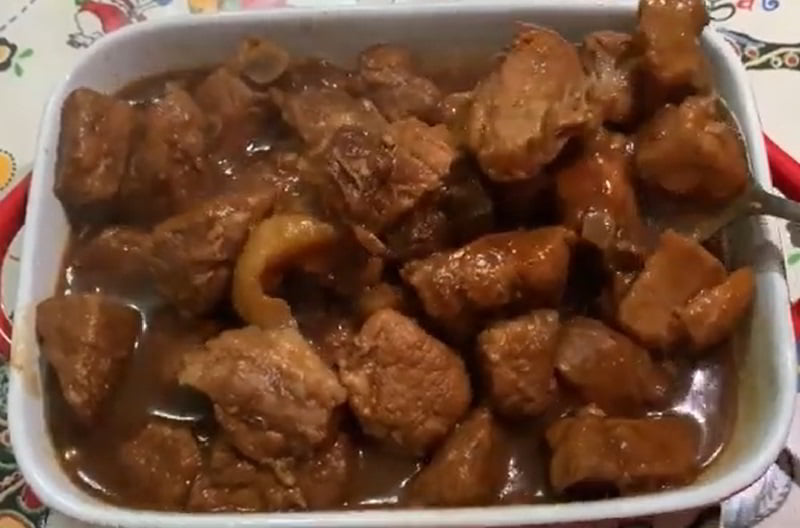
Yiu Hai Seto Quon

Jan-U-Wine

Lim's Café

Bar Chinois

Kue keranjang





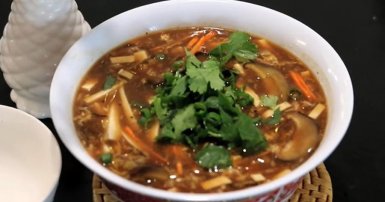
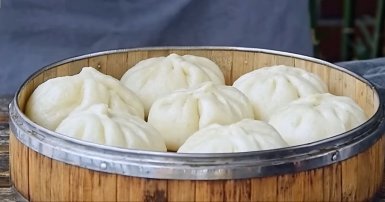
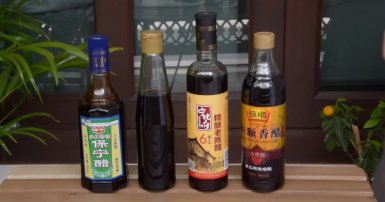
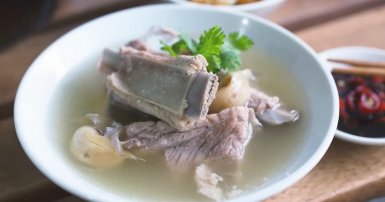



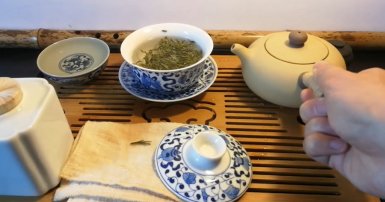

-1709813013.jpg)


